Manandmicrobes


33 New Medical microbiology project topics
Medical microbiology plays a crucial role in understanding and combating infectious diseases. Conducting a well-planned and meaningful project in this field is essential for advancing our knowledge and finding innovative solutions.
Choosing the right project topic is a critical first step in ensuring the success and impact of your research. In this article, we will explore various medical microbiology project topic ideas, research methodologies, project planning, data analysis, and more.
Importance of Medical Microbiology Projects
Medical microbiology projects contribute significantly to our understanding of pathogens, antimicrobial resistance, host-microbe interactions, and disease mechanisms.
By conducting research in this field, we can unravel the mysteries of infectious diseases and develop strategies for prevention, diagnosis, and treatment.
Significance of Choosing the Right Topic
Selecting an appropriate project topic is paramount to the success of your research. It should align with your interests, address a relevant research gap, and have practical implications .
The right topic will not only engage you throughout the project but also contribute valuable insights to the field of medical microbiology.
33 intriguing project topic ideas to consider
Here’s a non-exhaustive list of medical microbiology project topics for undergraduates and MSc students.
Topic 1: Investigating the Role of Gut Microbiota in Autoimmune Diseases
Autoimmune diseases have been linked to alterations in the gut microbiota. This project aims to explore the relationship between gut microbiota composition and the development, progression, and management of autoimmune diseases.
By studying microbial diversity, immune responses, and metabolomic profiles, we can gain valuable insights into potential therapeutic interventions.
Topic 2: Antibiotic Resistance Patterns of Common Pathogens
Antibiotic resistance poses a significant global health threat. This project focuses on investigating the antibiotic resistance patterns of common pathogens, such as Staphylococcus aureus, Escherichia coli, and Pseudomonas aeruginosa, in a local hospital setting.
By identifying the prevalent resistance mechanisms and associated risk factors, we can optimize antimicrobial therapy and develop strategies for infection control.
Topic 3: Impact of Microbial Biofilms on Chronic Wound Infections
Biofilms play a crucial role in chronic wound infections, leading to treatment challenges.
Recommended articles:
- 43 Project Topics on Food Microbiology: Latest
- 33 Microbiology Project Topics: You haven’t thought of
- Medical Treatment in Canada for Foreigners
- 5 Best Medical Loans of 2024: Top Options
- Best Banks for Medical Practice Loans: Top Lenders…
This project aims to understand the formation, composition, and antimicrobial resistance mechanisms of biofilms associated with chronic wounds.
By elucidating the intricate interactions between biofilm communities and host factors, we can develop novel approaches to manage and prevent these infections.
4. Characterization of antibiotic resistance mechanisms in multidrug-resistant bacteria.
5. Investigation of the role of biofilms in chronic infections.
6. Exploring the impact of probiotics on gut microbiota composition and health.
7. Elucidating the molecular basis of viral-host interactions in viral infections.
8. Analysis of the microbiome in patients with autoimmune diseases.
9. Assessing the effectiveness of phage therapy against antibiotic-resistant bacteria.
10. Identification and characterization of novel antimicrobial compounds from natural sources.
11. Investigating the role of the microbiome in the development of allergies and asthma.
12. Understanding the mechanisms of horizontal gene transfer in antibiotic resistance dissemination.
13. Evaluation of the efficacy of novel disinfectants in healthcare settings.
14. Molecular epidemiology of nosocomial infections and surveillance of antibiotic-resistant pathogens.
15. Investigating the impact of climate change on the spread of vector-borne diseases.
16. Studying the role of microbiota in the development and progression of colorectal cancer.
17. Analysis of the microbial diversity in dental plaque and its association with oral health.
18. Exploring the potential of bacteriophages as alternatives to antibiotics in treating bacterial infections.
19. Investigating the impact of environmental factors on the microbiota of the skin.
20. Characterization of the role of gut microbiota in metabolic disorders, such as obesity and diabetes.
21. Understanding the mechanisms of antifungal drug resistance in Candida species.
22. Evaluation of the efficacy of different sterilization techniques in medical device manufacturing.
23. Investigation of the role of microbial communities in chronic wound infections.
24. Analysis of the impact of vaccination on the prevalence and diversity of infectious diseases.
25. Identification and characterization of novel drug targets in pathogenic bacteria.
26. Study of the interaction between the microbiome and the immune system in autoimmune disorders.
27. Exploring the microbiota composition and its association with mental health disorders.
28. Investigating the role of viral infections in the development of cancer.
29. Evaluation of the efficacy of antimicrobial coatings in preventing healthcare-associated infections.
30. Study of the genetic basis of virulence in bacterial pathogens.
31. Analysis of the impact of antimicrobial stewardship programs on antibiotic resistance patterns.
32. Investigation of the microbial diversity in respiratory tract infections.
33. Understanding the role of the microbiome in inflammatory bowel diseases.
Remember to choose a topic that aligns with your interests and research goals. These topics offer a range of exciting avenues for exploration in the field of medical microbiology.
Recommended articles
- 10 benefits of studying microbiology
- Can microbiologists work in hospitals?
- Can microbiologists make vaccines?
- Can a microbiologist work in NNPC?
- How to be a good microbiologist?
- Can microbiologists become doctors?
Project Planning and Execution
Once you have chosen a project topic , it is essential to plan and execute your research effectively.
This involves setting clear objectives and goals, designing appropriate experiments and protocols, and considering ethical aspects. Collaborating with experts in the field can enhance the quality and impact of your research.
Data Interpretation and Analysis
After collecting data, it is crucial to analyze and interpret the findings accurately. Statistical analysis and data visualization techniques can help identify trends, patterns, and statistical significance.
Ensuring the validity and reliability of your results is essential for drawing meaningful conclusions.
Discussion and Conclusion
In the discussion section, interpret the significance of your research findings in the context of existing literature.
Compare and contrast your results with previous studies, highlight limitations, and propose future directions.
Conclude your project by summarizing key findings, emphasizing their implications, and discussing potential applications in medical microbiology.
How do I choose the right medical microbiology project topic?
To choose the right project topic, consider your interests, relevance to the field, and potential impact. Research current trends and gaps in medical microbiology, consult with mentors and select a topic that aligns with your goals.
What are the ethical considerations in medical microbiology research?
Ethical considerations include obtaining informed consent, ensuring patient confidentiality, following ethical guidelines and regulations, and conducting research with integrity and transparency.
How can I ensure the validity of my research findings?
To ensure validity, employ rigorous experimental design, use appropriate controls, validate methods, replicate experiments, analyze data critically, and consider potential biases and confounding factors.
Can I collaborate with other researchers on my project?
Collaboration with other researchers is encouraged as it brings diverse expertise, resources, and perspectives to your project. Collaborative efforts can enhance the quality and impact of your research.
How can I present my project findings effectively?
To present your project findings effectively, prepare clear and concise visual aids, practice your presentation, engage with your audience, and highlight the significance and implications of your research.
Conducting a medical microbiology project provides an opportunity to contribute to scientific knowledge and make a positive impact in the field of healthcare.
By selecting a compelling topic, planning your research, analyzing data diligently, and engaging in meaningful discussions, you can successfully execute a project that advances our understanding of infectious diseases and leads to improved patient outcomes.
- Is Campylobacter Contagious?
- How to Use Bone Broth for Gut Health?
- Does Campylobacter stay in your system?
- Best greens supplement for bloating and gut health
- Is a plant-based diet good for gut health?
Last Updated on June 3, 2023 by Our Editorial Team
Custom Essay, Term Paper & Research paper writing services
- testimonials
Toll Free: +1 (888) 354-4744
Email: [email protected]
Writing custom essays & research papers since 2008
100+ microbiology research topics to succeed.
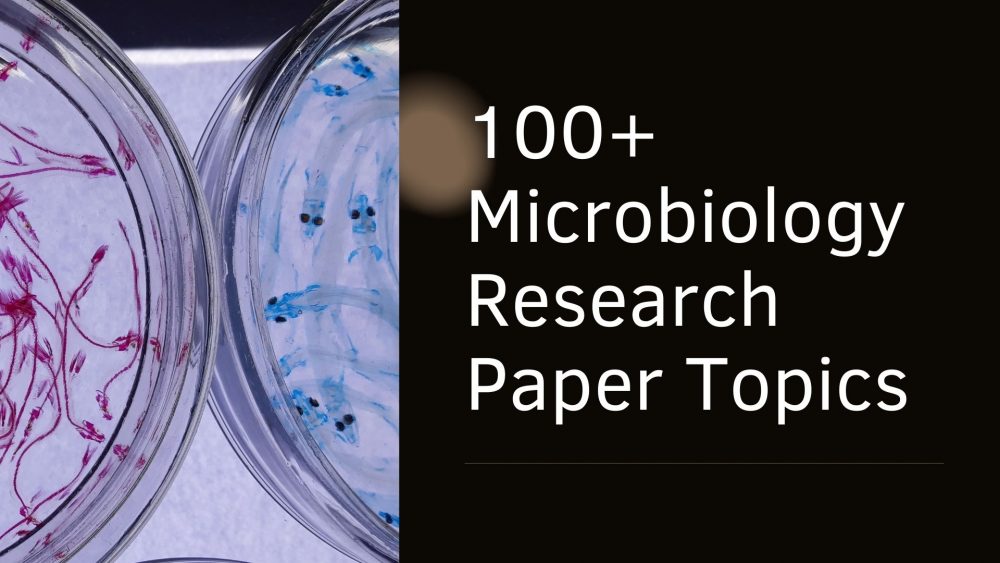
Microbiology topics are some of the most researched ideas. This field entails the study of different microorganisms, ranging from eukaryotic fungi and single-celled organisms to cell-cluster organisms. When pursuing a microbiology course in a university or college, your educators will ask you to write academic papers on microbiology research topics.
Choosing the right microbiology topics to write about is essential because it determines the direction of your research and writing processes. Therefore, take your time to identify a topic you will be comfortable working with from the beginning to the end.
Top Microbiology Topics for Research
If looking for the top microbiology research paper topics, this list has some of the best ideas to explore. That’s because most people are searching for information related to these topics in microbiology.
- Bioterrorism- Bioweapons limit with technological developments
- Antibiotics resistance- A major limitation in medicine
- Extraterrestrial life- Existing life evidence in space
- Gene therapy- Gene therapy as a controversial biology topic
- Cloning- Latest developments in cloning research
- Antibacterial products-Latest discoveries explaining the possibility of antibacterial products effects on the immune system
- What is the future of microbiology research, both theoretically and technologically?
- Epidemics- Current disease control protocols and possible solutions
- Vaccines- Recent research about the effectiveness of vaccines like flue
- Food preservation methods- How technology enhances safe food preservation and consumption
These are brilliant microbiology project topics. However, you need time and effort to research any of these topics and come up with an awesome paper.
Current Topics in Microbiology and Immunology
Maybe you want to research and write about current topics in microbiology and immunology. That means you’re looking for topics that will enable you to explore recent information in this area. In that case, consider these microbiology topics in the news.
- Virus-like particle vaccines for protozoan parasites and respiratory viruses
- Quorum sensing and campylobacter biofilm formation in molecular mechanisms
- Campylobacter horizontal gene and natural competence transfer
- Murine investigation models for innate immune response and colonization resistance in campylobacter jejuni infections
- iBALT role in respiratory immunity
- Antiviral immunity for pyroptosis
- Damage to the sensing tissue by Myeloid c-Type Lectin receptors
- How antifungal drugs modify the cell wall
- Host cell’s death pathways manipulation by the Herpes Simplex virus
- Type II Secretion system structures in needle filaments
- RIP Kinase signaling outcomes during neuro-invasive infection by virus
- Innate immune system pathological and physiological functions of CARD 9 signaling
- The genetics of the Lassa virus
- Genital immunity’s memory lymphocyte- Tissue-resident memory T cells’ role
- Delivery and formulation technologies for the mRNA vaccines
- Peptide and protein nanocluster vaccines
- Reovirus’ cell killing- Consequences and mechanisms
- Leptospirosis reference lab’s role
- Hypoxia-inducible and hypoxia factors in stem cell maintenance among cancer patients
- Development of dengue vaccine
Pick any of these new research topics in microbiology if your goal is to work on recent information. Nevertheless, take your time reading recent literature in this field to come up with an awesome paper.
Interesting Topics in Microbiology
Perhaps, you’re looking for microbiology projects topics that most people will find interesting to read about. In that case, consider these interesting microbiology topics.
- Techniques and methodologies for future research about the virus
- Redox-active metabolite’s roles in microbial signaling
- The role and emergence of yeast as a baking industry’s preservative
- Host-pathogenic interactions study with a focus on redox and cellular metals
- Yeast non-conventional use in the wine-making industry
- Microbiota- What is the bifidobacterila’s role in the human gut?
- Virus role in vaccines development and improvement in third world countries
- Heath- Microbiology role in addressing antibiotic resistance
- Human microbial ecosystems study- Microbe interactions
- Impact and role of viruses in large animals’ health
- How bacteria in complex organisms respond to stress
- Cell to cell interaction and social behavior in bacteria interactions
- Norovirus cross-contamination investigation during service procedures in the food industry in fresh produce preparation
- Transfer rate determination in Salmonella sp. From nut butter to food materials
- Listeria monacytogenes comparative genomic analysis for survival within a food processing situation
- Thermal resistance and survival of desiccated Salmonella in dry and moist food processing environments
- Effective cleaning products for removing food matrix with B. Thuringiensis spores and B. Cereus
- Analysis of cleaning procedures’ effects on Bacillus spores
- How temperature affects viruses survival in vegetables and fruits
- How temperature and time combine to stimulate C. botulinum spores to germinate or produce a toxin
This category has some of the most interesting and easy microbiology research topics. However, take your time to research the topic you choose to write a paper that will impress your educator to award you the top grade.
Medical Microbiology Research Topics
Maybe you want to explore microbiology and human health topics. In that case, consider these medical-related microbiology paper topics.
- Probiotics- A study of their preparation
- How to prevent sickle cell anemia
- The growth of mold
- How fertilizes, polythene and manure affect the hypocotyl’s elongation rate
- How cinnamon and curry inhibit the growth of bacteria
- How oil spills affect microorganisms in the oceans
- Reproducing yeast in sugar substitutes
- Why vitamin c affects the rotting rate for fruits
- Effective toothbrush disinfecting methods
- Describe the spread of Ebola
Consider any of these microbiology research topics research paper if interested in something to do with medicine. However, take your time to identify good and authentic information sources before you start writing your paper. That’s because your educator will be interested in unique and relevant content.
Microbiology Research Topics for Undergraduates
Are you pursuing undergraduate studies in microbiology? If yes, you will find these microbiology research topics for college students interesting.
- Using polymerase chain reaction to diagnose infectious diseases
- Preliminary antimicrobial and phytochemical screening of coat and seed of citrus sinensis
- Microbiology effect on mining
- Human skin colonization by bacteria
- Sweet orange’s antibacterial activity on Escherichia coli and staphylococcus aureus isolated from wound infection
- The susceptibility pattern of bacteria to antibiotics
- Bush pear analysis and the oil project
- Spoilt avocado microbial examination- What it reveals
- Characterization and isolation of microorganisms from a stored pap
- CryoEM use in understanding pathogen resistance and transport
- Additive manufacture of skin-facing antimicrobial devices for surgery
- Oral bacteria’s role in cardiovascular disease
- Nutrient-mediated ‘Dual warhead’ antimicrobials’ delivery
- Induction mechanisms of the protective lung tissue memory cells in influenza
- The activity of eukaryotic, elucidating topoisomerase in homologous recombination
- Oral bacteria involvement in chronic periodontitis- Metabolomics investigation
- Effect of metal nanoparticles on the multi-species biofilm consortia- A metabolomics investigation
- How vaping or smoking affects the risk of CoV-2, SARS, and COVID-19 outcomes
- Soil contaminants risks on below and above ground eco-systems in urban areas
- Protective microbes- How to rebuild microbiota when treating AMR infection
This category also has some of the best microbiology topics for presentation. However, get ready to research any of these topics to write an impressive paper.
Hot Topics in Microbiology
Perhaps, you’re looking for the most interesting microbiology essay topics to research and write about. In that case, consider some of the ideas in this category.
- Shea butter’s microbiological analysis
- Research of tapeworms and their dangers
- Influenza spread in the world and its impact on the war
- Restriction-modification cellular microbiology
- Applied microbiology- Biofuels generation using microorganisms
- Microscope invention and its effect on microbiology knowledge
- Microbiology role in food industries and pharmaceutical
- How microbiology has helped in preventing life-threatening illnesses
- Bacterial polymer- A study of cyanophycin
- A study of the functionalities and properties of wetland bacteria
- Microbiological study of a commercial preparation of yogurts
- A study of bacteria that withstand antibiotics
- Human immunodeficiency virus diagnosis- How it’s done
- A study of plasmodium species correlation
- A study of onions’ microorganisms
- An investigation of starch fermentation, specificities, and activities of its enzymes
- Listeria growth and survival in freshly cut vegetables
- Low moisture food inoculation protocols
- Survival and growth of Salmonella during partially sprouted products processing and chia powders
- Environmental organisms’ risk assessment and the importance of better control and knowledge
This category also has some of the best food microbiology topics. Nevertheless, students should be ready to spend time and effort researching any of these ideas before writing. That’s because educators expect them to present fresh and relevant information in their papers.
Learners have many topics or ideas to consider when researching and writing academic papers. However, every student should look for an interesting topic they are comfortable researching and writing about. That’s because writing a research paper or essay takes time. Choosing a boring topic means a learner will spend their time working on something they’re not interested in. And this can reflect on the quality of their paper. Thus, their grade will suffer.

Microbiology
A collection of TED Talks (and more) on the topic of Microbiology.
Video playlists about Microbiology

How microbes shape our world
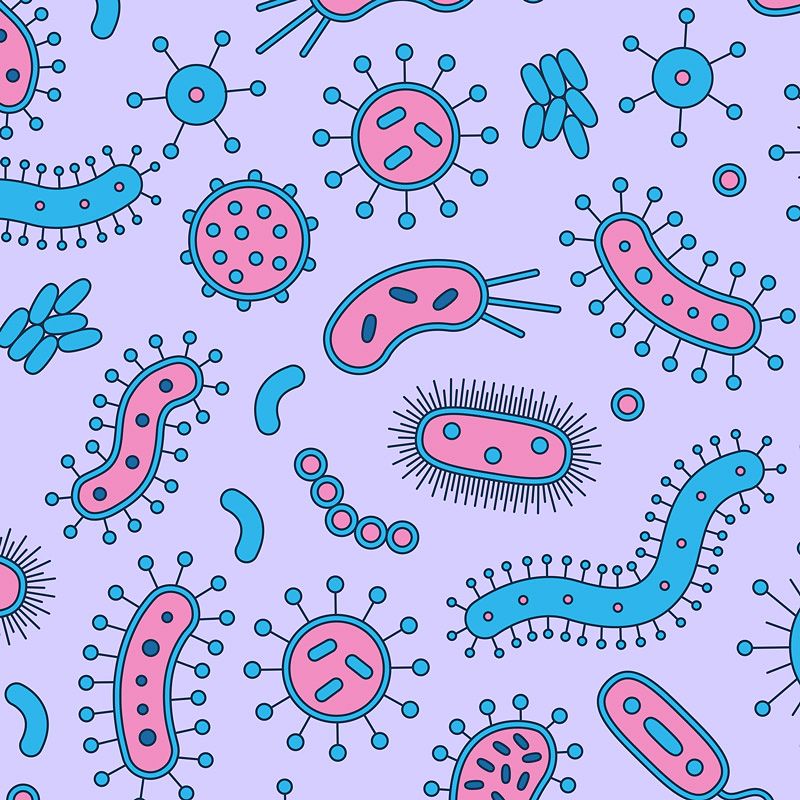
The fabulous life of germs

What's the big deal about Mars?
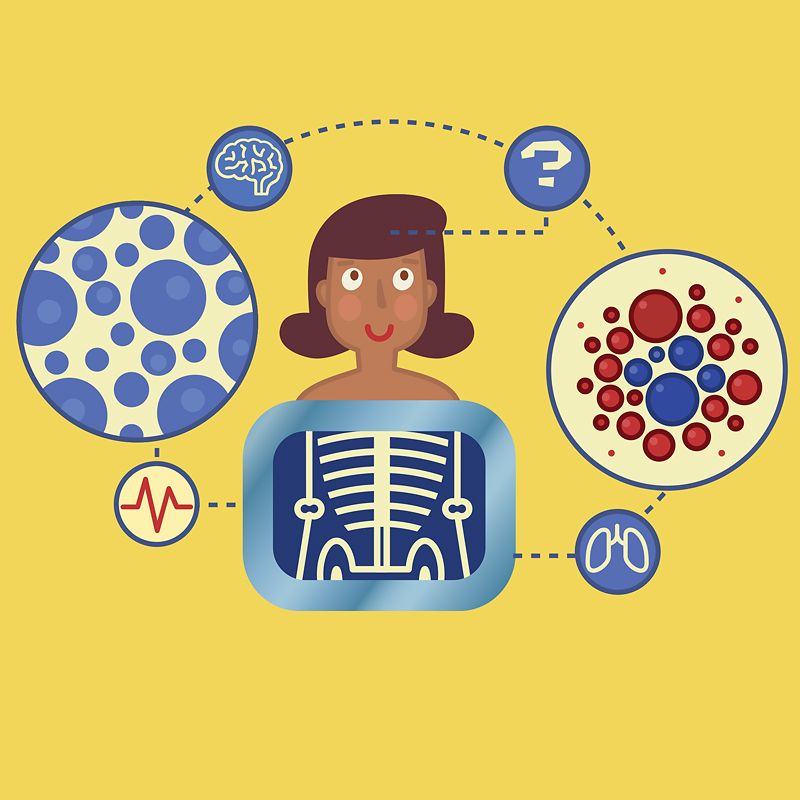
Weird facts about the human body
Talks about microbiology.

Do gut microbes control your personality?

CRISPR's next advance is bigger than you think

How to harness the ancient partnership between forests and fungi

The fingerprints of life beyond Earth

The search for microscopic aliens

What causes dandruff, and how do you get rid of it?

Why didn't this 2,000 year old body decompose?

What ocean microbes reveal about the changing climate

The urgent case for antibiotic-free animals

How the gut microbes you're born with affect your lifelong health

Humanity at the intersection of science and archaeology

How sharks could inspire a new generation of medical devices

The mysterious microbes living deep inside the earth -- and how they could help humanity

These bacteria eat plastic

To detect diseases earlier, let's speak bacteria's secret language
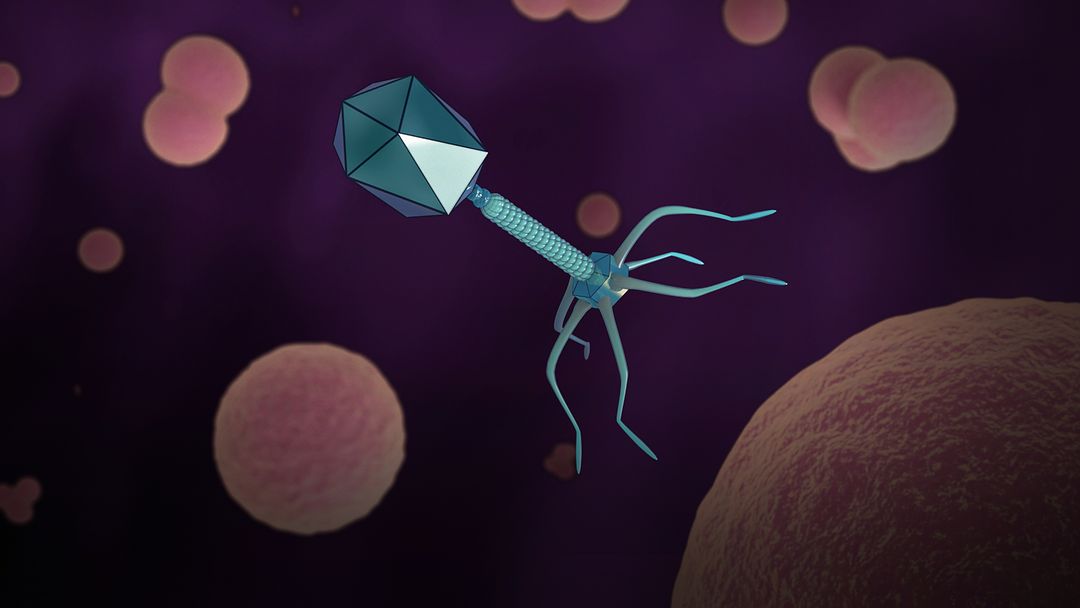
How a long-forgotten virus could help us solve the antibiotics crisis
Exclusive articles about microbiology, inside the fascinating (and delicious) science of sourdough bread, watch: a cellular biologist animates the life cycle of hiv in this hypnotic video, for healthier buildings, just add bacteria.
100+ Microbiology Project Topics [Updated]
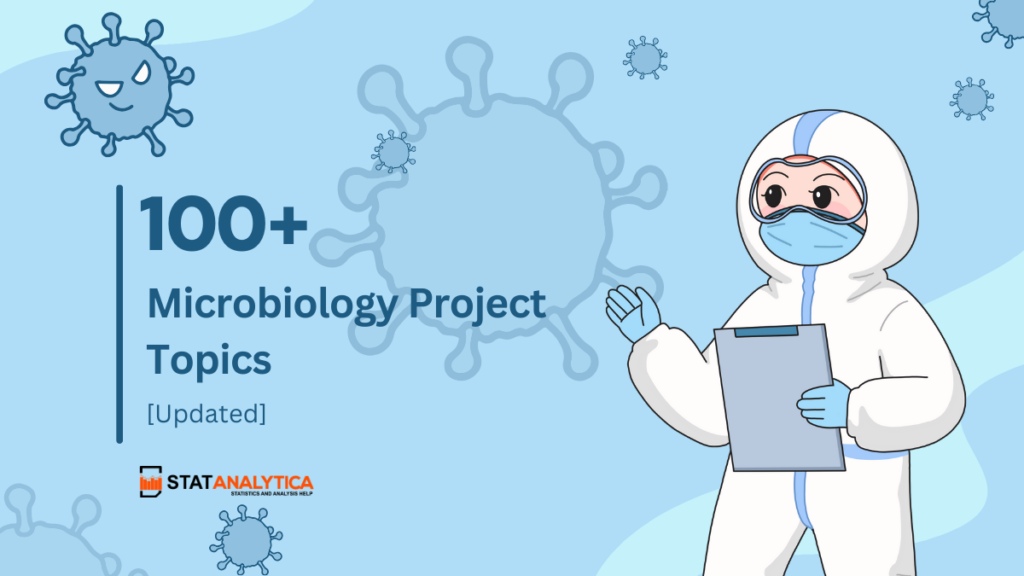
Microbiology, the study of microorganisms, holds immense importance in the realms of medicine, agriculture, industry, and environmental science. It’s a field teeming with opportunities for exploration and discovery. For students passionate about unraveling the mysteries of the microbial world, engaging in microbiology projects is not just educational but also immensely rewarding.
In this blog, we aim to provide a comprehensive guide to over 100 updated microbiology project topics across various sub-disciplines. Whether you’re a student seeking inspiration for your next research endeavor or an educator looking to expand your list of project ideas, this resource is tailored to meet your needs.
Choosing a Microbiology Project Topic
Table of Contents
Selecting the right project topic is crucial for the success and fulfillment of your research journey. Here are some key considerations to keep in mind:
- Personal Interest and Career Goals: Opt for a topic that aligns with your interests and long-term career aspirations. Whether it’s bacterial pathogenesis, virology, immunology, environmental microbiology, food microbiology, or clinical microbiology, choose a subject that excites you.
- Relevance to Current Trends: Stay abreast of the latest advancements and trends in microbiology. Topics related to emerging infectious diseases, antibiotic resistance, microbiome research, and biotechnological applications are particularly timely and impactful.
- Resource Availability and Feasibility: Assess the availability of laboratory resources, equipment, and expertise required for your chosen project. Ensure that your topic is feasible within the constraints of your academic or research environment.
100+ Microbiology Project Topics
Now, let’s delve into our curated list of microbiology project topics across various sub-disciplines:
Bacterial Microbiology
- Role of quorum sensing in bacterial biofilm formation.
- Antibiotic resistance mechanisms in clinically relevant bacterial strains.
- Bacteriophages as alternative therapeutics for antibiotic-resistant infections.
- Molecular mechanisms of bacterial pathogenicity using model organisms.
- Genetic diversity and evolution of influenza viruses for vaccine development.
- Host-virus interactions underlying viral replication and pathogenesis.
- Metagenomic profiling of viral communities to identify novel pathogens.
- Screening natural products for antiviral activity against emerging diseases.
- Efficacy of novel vaccine formulations in eliciting immune responses.
- Immunomodulatory effects of probiotics on mucosal immunity and gut health.
- Dysregulated immune responses in autoimmune disorders.
- Host immune evasion strategies in persistent viral infections.
Environmental Microbiology
- Microbial diversity in hydrothermal vent ecosystems using next-generation sequencing.
- Biodegradation of environmental pollutants by microbial consortia.
- Extremophilic microorganisms adapted to harsh environmental conditions.
- Role of soil microbiota in plant growth promotion and biocontrol.
Food Microbiology
- Microbial contamination in food processing facilities and sanitation practices.
- Identification and characterization of foodborne pathogens.
- Spoilage mechanisms of food products and strategies for shelf life extension.
- Safety and efficacy of probiotic supplements in fermented foods.
Clinical Microbiology
- Molecular epidemiology of healthcare-associated infections using whole-genome sequencing.
- Mechanisms of antimicrobial resistance in clinically important pathogens.
- Human microbiome profiling in health and disease states using metagenomics.
- Rapid diagnostic tests for infectious diseases in clinical settings.
Miscellaneous Topics
- Microbial ecology of the human gut microbiota.
- Role of microbiota in neurodevelopmental disorders like autism.
- Microbiological aspects of bioremediation in environmental cleanup efforts.
- Microbial production of biofuels and bioplastics.
- Application of CRISPR-Cas technology in microbial genome editing.
- Microbial production of enzymes for industrial processes.
- Microbial synthesis of novel antimicrobial compounds.
- Microbial fermentation processes for food and beverage production.
- Bioinformatics analysis of microbial genomes and metagenomes.
- Microbial ecology of extreme environments, such as deep-sea hydrothermal vents.
- Microbiological aspects of the human skin microbiome and its implications for health.
- Microbial diversity and ecosystem functions in freshwater and marine environments.
- Microbial interactions in symbiotic relationships with plants and animals.
- Microbial biogeochemical cycling of elements in terrestrial and aquatic ecosystems.
- Microbial diversity and community composition in urban environments.
- Microbial ecology of infectious diseases in wildlife populations.
- Microbial contributions to nutrient cycling and soil fertility in agricultural systems.
- Microbial contamination of water sources and strategies for water quality management.
- Microbial degradation of pollutants in soil and water environments.
- Microbial diversity and biotechnological potential of hot springs and thermal vents.
- Microbial ecology of the built environment, including hospitals and households.
- Microbial interactions in the rhizosphere and their effects on plant health and productivity.
- Microbial diversity and function in extreme environments, such as polar regions and deserts.
- Microbial ecology of air quality, including indoor and outdoor microbial communities.
- Microbial contributions to biogeochemical cycling in aquatic ecosystems, such as lakes and oceans.
- Microbial roles in the decomposition of organic matter and nutrient cycling in forest ecosystems.
- Microbial diversity and community dynamics in mangrove ecosystems and their ecological functions.
- Microbial contributions to the degradation of pollutants and xenobiotics in contaminated environments.
- Microbial interactions with pollutants and their role in environmental remediation strategies.
- Microbial diversity and function in hydrothermal vent ecosystems and their biogeochemical significance.
- Microbial diversity and community composition in permafrost environments and their response to climate change.
- Microbial ecology of extremophiles and their adaptations to extreme environmental conditions.
- Microbial diversity and function in deep-sea environments, including the deep ocean and hydrothermal vents.
- Microbial contributions to the biogeochemistry of carbon, nitrogen, and sulfur cycling in marine ecosystems.
- Microbial interactions with marine organisms and their role in marine food webs and ecosystem dynamics.
- Microbial diversity and function in coral reef ecosystems and their response to environmental stressors.
- Microbial contributions to the cycling of nutrients and organic matter in coastal ecosystems and estuaries.
- Microbial diversity and community composition in Arctic and Antarctic environments and their response to climate change.
- Microbial interactions with marine pollutants and their role in the degradation and detoxification of contaminants.
- Microbial diversity and function in marine sediments and their role in biogeochemical cycling and ecosystem functioning.
- Microbial ecology of deep-sea hydrothermal vents and cold seeps and their contributions to global biogeochemical cycles.
- Microbial diversity and community dynamics in oceanic oxygen minimum zones and their implications for carbon and nitrogen cycling.
- Microbial interactions with marine organisms and their role in shaping marine biodiversity and ecosystem structure.
- Microbial contributions to the cycling of nutrients and energy in marine ecosystems, including primary production and decomposition processes.
- Microbial diversity and function in marine plankton communities and their role in biogeochemical cycling and ecosystem productivity.
- Microbial ecology of marine symbioses, including mutualistic, commensal, and parasitic relationships between microbes and marine organisms.
- Microbial interactions with marine pollutants and their role in the biodegradation and detoxification of contaminants in marine environments.
- Microbial diversity and community composition in marine sediments and their role in biogeochemical cycling, nutrient regeneration, and sediment stability.
- Microbial contributions to the cycling of nutrients and energy in coastal ecosystems, including estuaries, salt marshes, and mangrove forests.
- Microbial diversity and function in coastal sediments and their role in biogeochemical cycling, organic matter degradation, and nutrient fluxes.
- Microbial ecology of marine viruses and their role in shaping microbial communities, nutrient cycling, and ecosystem dynamics in marine environments.
- Microbial diversity and community composition in marine snow aggregates and their role in transporting carbon, nutrients, and microbes in the ocean.
- Microbial interactions with marine organisms and their role in mediating host-microbe interactions, disease dynamics, and ecosystem functioning.
- Microbial contributions to the cycling of carbon and sulfur in marine sediments, including the role of anaerobic microbial processes in sedimentary environments.
- Microbial diversity and function in marine hydrothermal vent ecosystems and their role in chemosynthetic primary production, mineral precipitation, and ecosystem sustainability.
- Microbial ecology of marine deep-sea ecosystems, including abyssal plains, trenches, and seamounts, and their role in global biogeochemical cycles and biodiversity.
- Microbial diversity and community composition in marine sponge microbiomes and their role in nutrient cycling, secondary metabolite production, and host-microbe interactions.
- Microbial interactions with marine pollutants and their role in the bioremediation of oil spills, heavy metal contamination, and other anthropogenic pollutants in marine environments.
- Microbial contributions to the cycling of nutrients and energy in deep-sea ecosystems, including the role of chemosynthetic microbes in supporting deep-sea food webs and ecosystem functioning.
- Microbial diversity and function in marine coral reef ecosystems and their role in reef health, resilience, and recovery from environmental stressors such as climate change, pollution, and disease.
- Microbial ecology of marine plastic pollution and its impact on marine ecosystems, including microbial degradation of plastic polymers, biofilm formation on microplastic surfaces, and microbial interactions with plastic-associated pollutants.
- Microbial diversity and community composition in marine coastal habitats, including rocky shores, sandy beaches, and tidal pools, and their role in coastal ecosystem processes, biodiversity, and ecosystem services.
- Microbial interactions with marine organisms and their role in mediating host-microbe interactions, disease dynamics, and ecosystem functioning in marine ecosystems, including coral reefs, kelp forests, and seagrass meadows.
- Microbial contributions to the cycling of nutrients and energy in marine ecosystems, including the role of microbial processes in carbon sequestration, nitrogen fixation, and nutrient regeneration in the oceanic food web.
- Microbial diversity and function in marine pelagic ecosystems, including the open ocean, coastal upwelling zones, and polar seas, and their role in primary production, nutrient cycling, and global climate regulation.
- Microbial ecology of marine biofilms and their role in ecosystem processes, including biofouling, biocorrosion, and nutrient cycling in marine environments, such as ship hulls, oil platforms, and marine infrastructure.
- Microbial diversity and community composition in marine benthic habitats, including deep-sea sediments, hydrothermal vents, and cold seeps, and their role in biogeochemical cycling, energy flow, and ecosystem stability.
- Microbial interactions with marine pollutants and their role in the biodegradation, detoxification, and bioaccumulation of contaminants in marine ecosystems, including oil spills, heavy metals, plastics, and agricultural runoff.
- Microbial contributions to the cycling of nutrients and energy in marine ecosystems, including the role of microbial processes in carbon fixation, nitrogen cycling, and sulfur metabolism in marine food webs and biogeochemical cycles.
- Microbial diversity and function in marine deep-sea ecosystems, including abyssal plains, trenches, and seamounts, and their role in global biogeochemical cycles, biodiversity, and ecosystem functioning.
- Microbial ecology of marine sponge microbiomes and their role in nutrient cycling, secondary metabolite production, and host-microbe interactions in marine ecosystems, including coral reefs, mangrove forests, and seagrass meadows.
- Microbial interactions with marine pollutants and their role in the bioremediation of oil spills, heavy metal contamination, and other anthropogenic pollutants in marine environments, including coastal waters, estuaries, and marine sediments.
- Microbial contributions to the cycling of nutrients and energy in deep-sea ecosystems, including the role of chemosynthetic microbes in supporting deep-sea food webs, hydrothermal vent communities, and cold seep ecosystems.
- Microbial diversity and function in marine pelagic ecosystems , including the open ocean, coastal upwelling zones, and polar seas, and their role in primary production, nutrient cycling, and global climate regulation in the marine biosphere.
- Microbial diversity and community composition in marine benthic habitats, including deep-sea sediments, hydrothermal vents, and cold seeps, and their role in biogeochemical cycling, energy flow, and ecosystem stability in the deep sea.
- Microbial interactions with marine pollutants and their role in the biodegradation, detoxification, and bioaccumulation of contaminants in marine ecosystems, including oil spills, heavy metals, plastics, and agricultural runoff in coastal and oceanic environments.
Tips for Successful Microbiology Projects
Embarking on a microbiology project can be both exhilarating and challenging. Here are some tips to help you navigate the research process with confidence:
- Planning and Organization: Start with a clear research question and outline a detailed project plan with achievable milestones.
- Literature Review: Thoroughly review existing literature to build a solid theoretical framework for your research.
- Laboratory Techniques and Safety: Adhere to best practices for experimental design, data collection, and laboratory safety protocols.
- Data Analysis and Interpretation: Utilize appropriate statistical methods and data visualization tools to analyze your results effectively.
- Effective Communication: Prepare concise and compelling presentations or manuscripts to communicate your findings to peers and stakeholders.
In conclusion, microbiology offers a vast playground for exploration and innovation. By choosing the right project topic and following sound research principles, you can make meaningful contributions to our understanding of the microbial universe.
We hope this curated list of microbiology project topics serves as a valuable resource for students and educators alike, inspiring the next generation of microbial enthusiasts to embark on their research journeys. Happy exploring!
Feel free to share your thoughts, feedback, or additional project ideas in the comments section below. Together, let’s continue unraveling the mysteries of microbiology!
Related Posts

Step by Step Guide on The Best Way to Finance Car

The Best Way on How to Get Fund For Business to Grow it Efficiently
Leave a comment cancel reply.
Your email address will not be published. Required fields are marked *
Got any suggestions?
We want to hear from you! Send us a message and help improve Slidesgo
Top searches
Trending searches

solar eclipse
25 templates

16 templates

autism awareness
28 templates

12 templates

35 templates

7 templates
Microbiology Breakthrough
Microbiology breakthrough presentation, premium google slides theme and powerpoint template.
Advances in medicine are always important events, and it’s great if the new findings can be presented in a clear manner. If you want to make a contribution to the medical community and share what you found out in your research, this new breakthrough presentation template is for you.
We think the look of these slides will not only impress you, but also your audience as well. For starters, let’s say you are talking about microbiology, so we’ve thought that a little visual detail on the backgrounds, such as the illustrations of chemical compounds and molecules, would be a nice addition to go with your data. All of them are colored in black and red, which are the main tones of the palette, along with the white hue used in the backgrounds. The design is not complicated at all; the slides use lines as content dividers, separators, ornaments or as part of infographics. Speaking of which, we’ve made sure to include graphs, charts and a timeline, because you’ll need all of these to properly explain the information, the results, the analysis and the statistics. We’ve also included some linear icons, whose color can be changed at will, that you can use in conjunction with text or other resources. Did we say that everything is customizable? Well, it is! What’s more, there are alternative illustrations and even a set of icons related to health in case you need them. Download this template and open Google Slides or PowerPoint to get started. Keynote is also fine too!
Features of this template
- Has a formal design with white backgrounds and chemical-themed elements
- 100% editable and easy to modify
- 22 different slides to impress your audience
- Contains easy-to-edit graphics and maps
- Includes 1000+ icons and Flaticon’s extension for customizing your slides
- Designed to be used in Google Slides and Microsoft PowerPoint
- 16:9 widescreen format suitable for all types of screens
- Includes information about fonts, colors, and credits of the free resources used
What are the benefits of having a Premium account?
What Premium plans do you have?
What can I do to have unlimited downloads?
Don’t want to attribute Slidesgo?
Gain access to over 22300 templates & presentations with premium from 1.67€/month.
Are you already Premium? Log in
Related posts on our blog

How to Add, Duplicate, Move, Delete or Hide Slides in Google Slides

How to Change Layouts in PowerPoint

How to Change the Slide Size in Google Slides
Related presentations.

Premium template
Unlock this template and gain unlimited access

You are using an outdated browser. Please upgrade your browser or activate Google Chrome Frame to improve your experience.

Journal of Medical Microbiology (JMM) Seminar Series
31 May - Virtual, online
- Registration
- Speaker profiles
- Past seminars
The Scientific Seminar Series is designed to reach the microbiology community to disseminate knowledge across its professional networks. The events are designed as a regularly repeated series of short (typically 1–2 hour) online meetings.
The Journal of Medical Microbiology (JMM) monthly seminar series is designed to showcase high-quality and timely research from the journal’s key authors. JMM welcomes everything from laboratory research to clinical trials, including bacteriology, virology, mycology, and parasitology. The JMM seminars will reflect this same comprehensive scientific content.
Organising Committee 2023/24
- Professor Kalai Mathee (Florida International University, USA)
- Professor Jose-Luis Puente (Universidad Nacional Autonoma de Mexico)
Organising Committee 2022/23
- Dr Norman Fry (UK Health Security Agency, UK)
- Dr Tim Inglis (University of Western Australia, Crawley, Australia)
Sign up to attend this series of seminars via the 'Registration' tab. Instructions on how to join the Zoom session will be sent ahead of each seminar.
Please note all times listed on the programme are in BST (UK time).
* By completing and submitting this form, you understand, and hereby consent that the personal data provided by you in this form will be collected, processed and used by the Microbiology Society to send you any communication relating to the event. You understand and hereby consent that the personal data provided by you in this form will be collected, processed and used by the Microbiology Society for the following additional purposes, but only if you tick the relevant box above. The Microbiology Society is the data controller for the purpose of Data Protection Legislation. The Microbiology Society is a charity registered in England and Wales (Charity Number 264017), a charity registered in Scotland (Charity Number SC039250) and a company limited by guarantee, registered in England (Company Number 1039582).
- Session View
- Lecture View
Friday 31 May, Afternoon
Lessons from phage-bacteria interactions
Dr You-Hee Cho (Program of Biopharmaceutical Science and Department of Pharmacy, College of Pharmacy and Institute of Pharmaceutical Sciences, CHA University, Korea)
14:00 - 15:00
15:00 - 15:30
Friday 28 June, Afternoon
Friday 26 july, afternoon, friday 30 august, afternoon, friday 27 september, afternoon, friday 25 october, afternoon, friday 31 may.
Dr You-Hee Cho (Program of Biopharmaceutical Science and Department of Pharmacy, College of Pharmacy and Institute of Pharmaceutical Sciences, CHA University, Korea) Lessons from phage-bacteria interactions
Friday 28 June
Friday 26 july, friday 30 august, friday 27 september, friday 25 october.
Sign up to attend this series of seminars below. You will receive an email with information about each upcoming presentation, including joining instructions, a Zoom link, and any other relevant information, two days before each seminar. A second reminder email will be sent one hour before each seminar. Unfortunately, if you have signed up less than one hour before the seminar you will not be able to attend until the next seminar in the series.
Please note all times listed on the programme are in GMT (UK time).
All seminars will be run via Zoom, a link for which will be sent to you via email prior to the meeting. Please ensure you have updated to the latest version of the Zoom desktop or mobile application (version 5.3 or higher is recommended).

Dr You-Hee Cho – 31 May 2024
Program of biopharmaceutical science and department of pharmacy, college of pharmacy and institute of pharmaceutical sciences, cha university, korea.
Dr. You-Hee Cho is a Full Professor at CHA University College of Pharmacy. He got his PhD in February 1999 at Seoul National University and started his tenure-track professor position in March 2002 at Sogang University after his postdoctoral training at Massachusetts General Hospital. He has served for Korean scientific societies and funding agencies and received several awards: KMB Excellent Young Scientist Award (2009), MSK Senior Researcher Award (2019), JM Excellent Article Award (2020), and Minister’s Commendation (2021). Dr. Cho has been focusing on platform technology R&D for next-generation antibiotics and pharmabiotics, which are mostly based on synthetic biology of bacteriophage (phage) lifecycles and materials. A major strength of his research is to exploit a small-scale animal model using Drosophila melanogaster for infection and colonization caused by pathogenic or pharmabiotic bacteria. His group is very much interested in phage-bacteria and bacteria-bacteria interactions to uncover the previously unidentified molecular determinants in those interactions, which could be harnessed for new antibiotic and pharmabiotic discovery.

Dr Peter V Coyle – 23 February 2024
Md frcpath senior consultant – head of virology hamad medical city doha, state-of-qatar.

Prof Kalai Mathee – 24 September 2021, 28 January 2022, 26 August 2022, 27 January 2023 and 26 January 2024 seminars
Editor-in-chief (2017-2022), profile editor, journal of medical microbiology, professor, florida international university, miami, usa.
Professor Kalai Mathee, MSc, PhD, MPH, renowned at Florida International University (FIU), is celebrated for her contributions to microbiology and influential role in academia. As the first FIU faculty inducted into the American Academy of Microbiology , Mathee, a Malaysian native, has achieved notable milestones. Her academic journey spans from the University of Malaya to a Ph.D. in Microbiology and Immunology from the University of Tennessee, Memphis, and a Master's in Public Health from FIU. Mathee's career features several pioneering roles, including being the inaugural chair at FIU's College of Medicine and the first international editor of the Journal of Medical Microbiology . She became the first international Trustee and Council member of The Microbiology Society in January 2024. Her mentorship has impacted over 190 individuals, ranging from professors to middle-school students, contributing to over 170 publications and five patents. Recognitions for her mentorship include the Faculty Award for Excellence in Mentorship (2011) and the New England Biolabs Passion in Science Award (2014). Mathee has delivered over 150 lectures worldwide and engages actively in FIU's School of International and Public Affairs. She has been instrumental in establishing significant programs like the Global Health Conference and Consortium and has significantly contributed to the MLK forum. Mathee's global commitment to education and science is notable.
She was honored with the 2022 Microbiology Society Outreach Prize and has received prestigious awards, including the 2011 President's Council Worlds Ahead Faculty Award and the 2021 FIU Faculty Senate Service Award. Mathee's career epitomizes her dedication to the community within FIU and in the broader realms of microbiology and Tamilar studies. Her resilience, optimism, and perseverance underscore her transformative impact in academia and beyond.

Dr Joe James – 27 October 2023 Seminar
Dr. James is the Head of Influenza and Newcastle Disease Research at the Animal and Plant Health Agency (APHA) and leads a series of teams in diverse research activities. He is also the Deputy Director of the WOAH/FAO International Reference Laboratory for Animal Influenza and Newcastle Disease and UK Disease Consultant for the avian influenza virus. As well as the frontline diagnosis of notifiable avian and mammalian influenza viruses and Newcastle disease, the workgroup is supported by active research programmes across a broad range of research areas.
LinkedIn: linkedin.com/in/joe-james-virologist
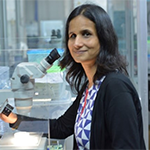
Dr Varsha Singh – 29 September 2023 Seminar

Dr Jason Rosch – 28 July 2023 Seminar
Associate member in the department of host-microbe interactions at st. jude children’s research hospital, us.
Dr. Jason Rosch received his bachelor’s degree from the College of Wooster followed by a PhD in Molecular Microbiology and Microbial Pathogenesis from Washington University. He is currently an Associate Member in the Department of Host-Microbe Interactions at St. Jude Children’s Research Hospital. His research focuses on virulence mechanisms of pathogenic streptococci and antibiotic resistance. Work in his lab encompasses how virulence strategies and the development of antibiotic resistance differs in high-risk patient populations through both translational projects in collaboration with clinicians as well as basic research into fundamental biological processes. These studies have revealed of number of important insights in a variety of areas including viral-bacterial co-infections, recalcitrant bacterial infections in immune-compromised pediatric patients, and mechanistic dissection and targeted therapies to mitigate respiratory complications of sickle cell disease. He has published over eighty publications in the field of host-pathogen interactions and has been continuously supported by several NIH grants.

Dr Andrew Broadbent – 30 June 2023 Seminar
Associate professor at the university of minnesota, us.
Dr Andrew Broadbent is an Assistant Professor in the Department of Animal and Avian Sciences at the University of Maryland in the USA. Dr Broadbent graduated with a degree in Veterinary Medicine from the University of Cambridge in the UK, and a PhD in Microbiology & Immunology from Imperial College London. He then undertook postdoctoral research in Virology at the National Institutes of Health (NIH) in the USA, before returning to the UK to establish his own laboratory specialising in avian viruses at The Pirbright Institute. He moved back across the Pond to continue to grow his research team in 2021, where his lab currently focuses on infectious bursal disease virus (IBDV), avian reovirus (ARV), and avian influenza virus (AIV). He is currently an Editor for the Journal of Medical Microbiology

Dr Ryan Hunter – 26 May 2023 Seminar

Professor Jose Luis Puente – 24 February 2023 Seminar
Editor, journal of medical microbiology , professor at universidad nacional autonoma de mexico (unam), cdmx, mexico.
Professor Jose L. Puente is from Universidad Nacional Autonoma de Mexico (UNAM) and Editor for the Journal of Medical Microbiology .
He gave his talk in the February 2023 JMM Seminar Series about how virulence gene regulates attaching and effacing of bacteria, acting as a unique toolbox.

Dr Stephen Michell – 25 November 2022 Seminar
Senior lecturer in molecular microbiology, university of exeter, uk.
Dr. Stephen Michell is a Senior Lecturer in Molecular Microbiology at the University of Exeter. After graduating from Imperial College London, he undertook his Ph.D. at St Mary's Hospital, Imperial College, and the Animal Plant Health Agency Weybridge, researching lipoproteins of the Mycobacterium tuberculosis complex (MTBC). Dr. Michell then moved to the Defence Science and Technology Laboratories Porton Down, where his research included novel vaccines for Francisella tularensis and studying the resistance mechanisms to ricin. He then returned to academia, joining the University of Exeter, where he continued to explore human bacterial pathogens, including Clostridioides difficile and Vibrio vulnificus , focusing on secreted and cell wall proteins.

Prof Roberto La Ragione – 28 November 2022 Seminar
Professor of veterinary microbiology and pathology, school of veterinary medicine and head of the school of biosciences and medicine, university of surrey, uk.
Roberto graduated in 1995 and then went on to study for a post graduate degree in veterinary microbiology at the RVC. In 1996 he moved to the government Veterinary Laboratories Agency to undertake a PhD on the pathogenesis of E. coli in poultry. In 2005 Roberto was appointed head of pathogenesis and control at the APHA and in 2010 he was appointed Professor of Veterinary Microbiology and Pathology at the University of Surrey.
Roberto gained the FRCPath in 2010 and in 2012 was appointed the Associate Dean for Veterinary Strategy in the School of Veterinary Medicine. In 2014 he was appointed Head of the Department of Pathology and Infectious Diseases and 2019 Deputy Head of School. In 2021 he was appointed Head of the School of Biosciences and Medicine. Roberto is the Chair of the Royal College of Pathologists Veterinary Pathology Specialty Advisory Committee, Chair of the Humanimal Trust, a Trustee of the Houghton Trust, a member of the APHA Science Advisory Board, and the past president of the Med-Vet-Net Association and the Veterinary Research Club. Roberto is an Associate member of the European College of Veterinary Microbiology (AECVM). In 2020 he was awarded Honorary Associateship of the Royal College of Veterinary Surgeons (HonAssocRCVS).
Roberto’s current research interests focus on AMR and understanding the pathogenesis of zoonotic bacterial pathogens. Roberto has a particular interest in the development of control and intervention strategies, including rapid diagnostics, vaccines, and probiotics for the control of pathogens such as Salmonella, Brachyspira and E. coli in food producing animals. Roberto has published over 190 peer reviewed papers in the area of microbiology.

Prof Kim Hardie – 30 September 2022 Seminar
Senior editor, journal of medical microbiology, professor in bacterial pathogenesis, university of nottingham, uk.
Kim Hardie is Professor in Bacterial Pathogenesis within the School of Life Sciences at the University of Nottingham, UK, and co-leads the Division of Infection, Immunity and Microbes. She is also co-investigator in the National Biofilm Innovation Centre and co-Director for the Wellcome Trust Doctoral Training Programme on Antimicrobials and Antimicrobial Resistance that is held jointly with the University of Birmingham. Kim studied at the Universities of Leicester and Cambridge, UK, before undertaking postdoctoral research at the University of Victoria, Canada, and Institut Pasteur, France. She joined the JMM Editorial board in 2011 and is currently senior editor for the Pathogenicity, Virulence and Host Response section. Her research group studies how proteins are secreted and how bacteria regulate these proteins. The work specifically aims to understand the fitness burden of producing signalling molecules that are used by bacteria to communicate with each other, and how this impacts on pathogenicity. To do this, Kim’s research group have been investigating how bacteria form coordinated communities on surfaces (biofilms) including skin. State-of-the-art multidisciplinary approaches are combined with realistic infection models to investigate how antimicrobials penetrate complex biofilm structures. Her aim is to discover novel antimicrobials, or more effective combination therapies.
Kim communicates science as broadly as possible. Her portfolio of outreach activities includes the Royal Society Summer exhibition (2019, 2020), media interviews (TV and radio), science festivals, Wonder, bespoke school/NHS outreach, and learned society governance roles (Royal Society of Biology and Microbiology Society).


Dr Rikke Meyer – 29 July 2022 Seminar
Associate professor, aarhus university, denmark.
Rikke Meyer has an MSc and PhD in microbiology and is an Associate Professor at the Interdisciplinary Nanoscience Center at Aarhus University, Denmark. She is leading an interdisciplinary research group that combines microbiology and nanotechnology to understand how bacteria adhere to surfaces and form biofilms, and how biofilms can be prevented or treated through innovations in nanoscience, chemistry and biotechnology.
For example, her research has shown that bacteria use extracellular DNA to adhere to surfaces with a wide range of properties. DNA is a key component of the biofilm matrix in biofilms from freshwater to industrial systems and for clinically relevant pathogens. Her work on host-pathogen interactions by Staphylococcus epidermidis has provided a new understanding of how biomaterials can facilitate bacterial attachment by steering the conformation of host proteins that adsorb to the material surface.
She has collaborated with many research groups and private companies to develop antifouling or antimicrobial solutions through nanoscale coatings, enzymes, nanoparticles and nanoformulation of antibiotics. Fundamental and applied research projects go hand in hand in her laboratory, ensuring a short path from research to innovation.

Dr Salvador Almagro-Moreno – 24 June 2022 Seminar
Assistant professor of medicine, university of central florida, orlando, usa.
Dr Salvador Almagro-Moreno received his BS in Biology from the University of Granada and PhD in Microbiology from the National University of Ireland. Subsequently, he moved to the United States as the E. E. Just Postdoctoral Fellow at Dartmouth College, USA. Currently, he is an Assistant Professor of Medicine at the University of Central Florida in Orlando, USA.
The Moreno Lab focuses on the emergence and evolution of bacterial pathogens. Their primary research interests include elucidating the molecular strategies that bacterial pathogens develop for host colonisation, virulence regulation and dispersal from the host. Furthermore, they are interested in connecting ecosystems with manmade environmental perturbations (e.g. climate change, pollution) to determine their pathogenic potential and transmission. His research program focuses on several pathogenic members of the Vibrionaceae , a family of aquatic bacteria, as model systems. In addition, investigations emphasize the intestinal pathogen Vibrio cholerae , which represents a paradigm of infectious disease agents, and Vibrio vulnificus , a poorly understood emergent zoonotic pathogen, source of fulminant septicemia. His research approach strives to be holistic and multidisciplinary; what we call “From Bays to Bases.” It encompasses molecular biology, genomics, ecology, and pathogenesis. He believes that by understanding pathogen evolution and ecology, to ultimately gain the knowledge that will allow forecasting the traits of emergent virulent strains, predict the sources of outbreaks, and designing reliable treatments against bacterial threats.
Research in the Moreno Lab has been funded by the US National Science Foundation, the National Institutes of Health, the United States Food and Drug Administration, and the Binational Science Foundation. Dr Almagro-Moreno has received numerous awards and honors, including the National Science Foundation CAREER Award and the Scialog Fellowship on Mitigating Zoonotic Threats. He recently became one of the Burroughs Wellcome Fund Investigators in the Pathogenesis of Infectious Disease.
To learn more about the Moreno Lab, please visit www.vibriocholerae.org.

Dr Arnoud van Vliet – 27 May 2022 Seminar
Senior editor, journal of medical microbiology, senior lecturer in microbiology, school of veterinary medicine, university of surrey, uk.
Dr. Arnoud van Vliet is a Senior Lecturer in Microbiology at the School of Veterinary Medicine of the University of Surrey, UK. He received his Ph.D. in infectious diseases from the University of Utrecht in 1995 and has led research groups at the Erasmus MC Rotterdam in the Netherlands and the Institute of Food Research, Norwich, UK. His research focuses on zoonotic bacterial pathogens such as Campylobacter, Listeria , Escherichia coli, and Salmonella . While he trained as an experimental scientist, he moved into the area of genomics/bioinformatics, intending to use genome sequencing and analysis technologies to understand better bacterial virulence, biology, epidemiology, and antimicrobial resistance. One of his goals is to make bioinformatics/genomics more accessible and user-friendly to novice users. He is currently Senior Editor of the Molecular and Microbial Epidemiology section of JMM and has been an editor of microbiology journals since 2003.

Dr Sixto M. Leal Jr. M.D, PhD – 25 February 2022 Seminar
Director, clinical microbiology, fungal reference laboratory, university of alabama at birmingham, usa.
Dr. Leal has a broad background in microbiology, immunology, molecular biology and medicine with residency training in pathology and subspecialty fellowship training in medical microbiology. He received his MD/PhD training in the Medical Scientist Training Program (MSTP) at Case Western Reserve University, pathology residency training at the University of North Carolina in Chapel Hill, and Microbiology fellowship training at the Cleveland Clinic. He is certified by the American Board of Pathology in Clinical Pathology and Medical Microbiology and is a Diplomate of the American Board of Medical Microbiology. He has a special clinical and research interest in medical mycology and has been at the forefront of COVID-19 diagnostic response and the study of COVID-Associated 2° mold infections.

Dr Norman K. Fry PhD – 26 November 2021 seminar
Co-editor-in-chief, journal of medical microbiology, consultant clinical scientist, laboratory surveillance lead – vaccine preventable bacteria, uk health security agency, london uk.
Norman is a Consultant Clinical Scientist and Laboratory Surveillance Lead for Vaccine Preventable Bacteria at the UK’s Health Security Agency (UKHSA), Colindale, London, UK. The UKHSA brings together the health protection functions of Public Health England and National Health Service Test and Trace, including the Joint Biosecurity Centre. Norman is also Head of the Vaccine Preventable Bacteria Section which includes the National Reference Laboratories for Streptococcus pneumoniae , Haemophilus influenzae , Bordetella pertussis and diphtheria. His laboratory also hosts the World Health Organisation Collaborating Centre (WHO CC) for Streptococcus pneumoniae and Haemophilus influenzae ( Co - Heads: Norman Fry & David Litt ) and the WHO CC for Diphtheria and Streptococcal infections ( Head, Prof Androulla Efstratiou ). Norman is also Co-Editor-in-Chief (with Prof Kalai Mathee) for one of the Microbiology Society journals, the Journal of Medical Microbiology .
Norman completed a BSc (Hons) in Microbiology and Virology from the University of Warwick in 1984, and was awarded a PhD on Legionella in 1992 whilst at Colindale. From 1992-1995 he moved to the USA to pursue a post-doctoral fellowship exploring microbial populations in the deep subsurface at the University of Illinois and Northwestern University, with field trips to the Pacific Northwest National Laboratory, Richland, Washington State to filter many litres of groundwater. He returned to Colindale, public health microbiology and Legionella in 1996, then moved into working on the bacteria causing vaccine preventable diseases.

Dr Tim Inglis – 29 October 2021 seminar
Deputy editor-in-chief, journal of medical microbiology, associate professor, university of western australia medical school, pathology & laboratory medicine, perth, australia.
Tim Inglis is a UK-trained medical microbiologist, who migrated via Singapore to Australia, and Deputy Editor-in-Chief of Journal of Medical Microbiology. His work on emerging infectious diseases in Western Australia has emphasised capability building in regional, rural and remote locations where pathology support is lacking. Currently, much of his time is taken up on COVID laboratory activities, and if it weren’t for the pandemic, he would be working flat out on new methods for rapid diagnosis of systemic, drug-resistant infections in regional Australia. In his spare time, he enjoys trail running and looking after a smallholding.

Dr Lynn Silver – 27 August 2021 seminar
Pediatrician, public health advocate and independent research consultant.
Dr Lynn Silver received her PhD in Molecular and Microbiology at Tufts University in 1975 and did postdoctoral work at the University of Geneva and NIH. In 1982, she joined Merck Research Laboratories, where she conducted research and supervised groups in discovery efforts for new antibacterials in both natural products and chemical collections. She oversaw various programs involving inhibitors of DNA and cell wall synthesis, participated in the discovery of the first published inhibitors of LpxC and the novel antibiotic platensimycin (FabF inhibitor). Her group also supported many chemistry efforts toward improving classic antibiotics, such as macrolides, glycopeptides and carbapenems, to overcome resistance. She was a member of several drug-development project teams including that of the carbapenem INVANZÒ. As a member of an in-licensing committee, she was involved in due diligence of academic and biotech projects and compounds.
After taking early retirement from Merck, she became an independent consultant in antibacterial discovery and pre-clinical development in 2004. Throughout her career, she has authored significant research papers and reviews in the field of bacterial genetics, physiology, and biochemistry, as well as the challenges to discovery of antibacterial agents. Currently, she has been participating in scientific advisory boards of several groups funding antibiotic discovery and development.
The role of National Influenza Centers in preparing for seasonal and pandemic respiratory viruses – Friday 23 February 2024
Mastering the art of scientific review: a comprehensive guide to critiquing published articles – friday 26 january 2024, an update on high pathogenicity avian influenza – friday 27 october 2023, toroidal displacement of klebsiella pneumoniae by pseudomonas aeruginosa is a unique mechanism to avoid competition for iron – friday 29 september 2023, new insights into pneumococcal pathogenesis and antibiotic resistance – friday 28 july 2023, understanding the pathogenesis of avian viruses with a view to improving control – friday 30 june 2023, when good bugs go wild: the role of commensal microbiota in chronic airway disease – friday 26 may 2023, virulence gene regulation in attaching and effacing bacteria: a unique toolbox – friday 24 february 2023, first impression: how to make a perfect pitch – friday 27 january 2023, lipoproteins as candidate vaccines for health care acquired infections – 25 november 2022, exploring the microbiomes of animals in health and disease – 28 october 2022, interrogating biofilms to improve antimicrobial options to combat rising resistance – 30 september 2022, how to prepare compelling slides and deliver an effective oral presentation – 26 august 2022, biofilms: bacterial fortresses that cause chronic infections – 29 july 2022, cholera: the forgotten pandemic – 24 june 2022, the wondrous world of pathogen genomics and molecular epidemiology: dos, don'ts and other stories – 27 may 2022, tackling covid-19 in the clinical and mycology research lab – 25 february 2022, how to improve your manuscript writing skills by dissecting its anatomy – 28 january 2022, diphtheria: the strangling angel – 26 november 2021, covid-19: a lesson in pandemic preparedness – 29 october 2021, sars-cov-2 vaccines and variants: myths, misconceptions and facts – 24 september 2021, antibiotics: challenges of antimicrobial discovery revisited – 27 august 2021.

Top 50 Research Topics of Microbiology
Table of Contents
Microbiology
The microbiology sector has seen huge development over the years to what it is now. You might be well aware that our earth’s surface consists of a huge microbial diversity and these wide microbial communities are present in all nooks of the earth. They offer several services to our environment. Without microbial communities, the whole earth will be a different place to live in. This is the reason microbiological research is so vital.
Microbiology is one of the very actively researched grounds, that deal with the study of microorganisms starting from the eukaryotic fungi to single celled and various cell cluster organisms. Various courses like B.Sc., M. Sc., M. Phil and Ph.D in subjects like Microbiology , Biotechnology and Molecular Biology, students are doing projects for their thesis. Excluding these, students from other courses including B. Tech, M. Tech courses in Biotechnology , paramedical courses like Pharmacy (B. Pharm. and M. Pharm.) and even Medical are searching projects or thesis topics for microbiology. If you are thinking of starting a research or project work in microbiology, then you must be searching for a good topic. So we planned to make it somewhat simple and easy for you.
This article discusses about some of the top and current research topics on microbiology. Before coming to the lists of topics let’s have a brief discussion on some of the important and key tips that we should consider before finalizing a topic.
- We should remain more focused on our investigation which will help us in planning a very clear experiment and in getting very useful and pertinent data.
- We should choose a topic which will get easily manageable within the given time frame.
- One of the best tips is to initiate by formulating a hypothesis and then confirming it.
- The rate of success or failure depends on how well you are versed with the methodology.
We also provide Labmonk notes on some subjects on our platform. Click here to check out . If you are interested to share your notes on this platform please contact us.
Click the page numbers below to read more on this topic.
12 thoughts on “Top 50 Research Topics of Microbiology”
Thank you for sharing, fantastic blog…
I like this site its a master peace ! .
was helpful thanks
I need Bsc research titel
Yes,I interested in discussion
Yes, I interested in microbiology discussion
Can anyone suggest a topic for research in Microbiology!
It’s indeed fantastic!
Labmonk is like Alexandra Elbakyan of India… Breaking barriers for learners… More to go Monk
Hello sir Research topic for microbiology and study of microbiology
Leave a Comment Cancel reply
Save my name, email, and website in this browser for the next time I comment.
Thank you for visiting nature.com. You are using a browser version with limited support for CSS. To obtain the best experience, we recommend you use a more up to date browser (or turn off compatibility mode in Internet Explorer). In the meantime, to ensure continued support, we are displaying the site without styles and JavaScript.
- View all journals
Microbiology articles from across Nature Portfolio
Microbiology is the study of microscopic organisms, such as bacteria, viruses, archaea, fungi and protozoa. This discipline includes fundamental research on the biochemistry, physiology, cell biology, ecology, evolution and clinical aspects of microorganisms, including the host response to these agents.
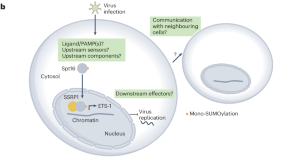
Primal FEAR protects against infection
FEAR is an ancestral histone chaperone complex that can control virus infections in an interferon-independent manner.
- Derek Walsh
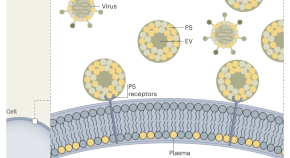
Extracellular vesicles block viral entryways
Extracellular vesicles carrying phosphatidylserine on their surface, found in large quantities in semen, saliva and breast milk, but not in blood, provide an innate defence strategy by blocking viral entry through competition for binding to cellular phosphatidylserine receptors, explaining why many viruses are transmitted by blood rather than by these body fluids.
- Leonid Margolis

Host species drive composition of mosquito virome
Metatranscriptomic data from more than 2,000 mosquitoes of 81 species show that the composition of mosquito viral communities is determined more by host phylogeny than by climate and land-use factors, which will help to inform arbovirus surveillance.
- Sarah François
Related Subjects
- Antimicrobials
- Applied microbiology
- Bacteriology
- Bacteriophages
- Biogeochemistry
- Cellular microbiology
- Clinical microbiology
- Microbial communities
- CRISPR-Cas systems
- Environmental microbiology
- Industrial microbiology
- Infectious-disease diagnostics
- Microbial genetics
- Parasitology
- Phage biology
- Policy and public health in microbiology
Latest Research and Reviews
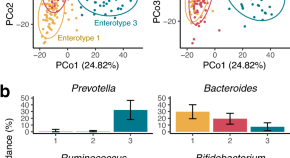
Dimension reduction of microbiome data linked Bifidobacterium and Prevotella to allergic rhinitis
- Shohei Komaki
- Yukari Sahoyama
- Eiryo Kawakami

Resistant Escherichia coli isolated from wild mammals from two rescue and rehabilitation centers in Costa Rica: characterization and public health relevance
- Rita Fernandes
- Raquel Abreu
- Manuela Oliveira
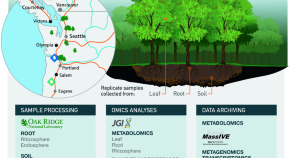
An integrated metagenomic, metabolomic and transcriptomic survey of Populus across genotypes and environments
- Christopher Schadt
- Stanton Martin
- Mitchel Doktycz
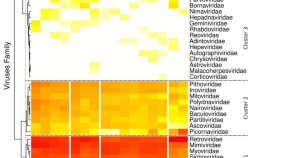
Genomic characterization of a novel Hepatovirus identified in Maranhão state, Brazil
- Walna Micaelle de Moraes Pires
- Ana Cecília Ribeiro Cruz
- Iracilda Sampaio
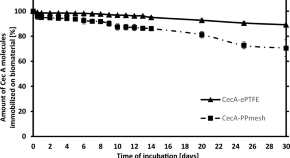
Modified polymeric biomaterials with antimicrobial and immunomodulating properties
- Katarzyna Szałapata
- Mateusz Pięt
- Anna Jarosz-Wilkołazka

Origin and dispersal history of Hepatitis B virus in Eastern Eurasia
Hepatitis B virus is an ancient human pathogen that dates back more than 10,000 years. Here, the authors investigate the evolutionary history of the virus in Eastern Eurasia by sequencing 34 genomes dating from approximately 400–5,000 years ago and comparing them with other contemporary sequences.
- Aida Andrades Valtueña
News and Comment
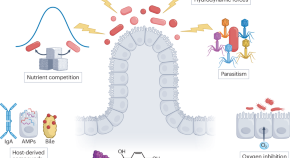
Exploiting gut microbial traits and trade-offs in microbiome-based therapeutics
The clinical translation of therapeutics on the basis of human gut microorganisms is hampered by our limited knowledge of how microbes survive and adapt to fluctuating conditions in the gut. The systematic exploration of gut microbiome survival strategies and trade-offs will thus enable the design of more efficient microbiome-based interventions.
- Daniel Rios Garza
- Karoline Faust
Making HTLV-1 and those affected visible
Carolina Rosadas explains why we need more research investigating human T lymphotropic virus type 1 (HTLV-1) infections, and why more public visibility is needed for those affected.
- Carolina Rosadas
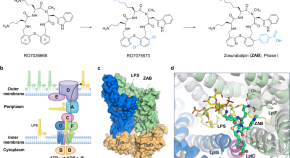
Macrocyclic peptides: up-and-coming weapons to combat antimicrobial resistance
- Wen-Jing Wang
- Xiang-Min Dong

Long COVID still has no cure — so these patients are turning to research
With key long COVID trials yet to yield results, people with the condition are trying to change how clinical trials are done.
- Rachel Fairbank
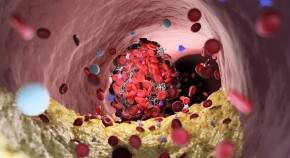
Gut bacteria break down cholesterol — hinting at probiotic treatments
Species in the human microbiome have enzymes that can metabolize a potentially dangerous lipid.
- Julian Nowogrodzki
Quick links
- Explore articles by subject
- Guide to authors
- Editorial policies
- Search Menu
- FEMS Microbiology Ecology
- FEMS Microbiology Letters
- FEMS Microbiology Reviews
- FEMS Yeast Research
- Pathogens and Disease
- FEMS Microbes
- Awards & Prizes
- Editor's Choice Articles
- Thematic Issues
- Virtual Special Issues
- Call for Papers
- Journal Policies
- Open Access Options
- Submit to the FEMS Journals
- Why Publish with the FEMS Journals
- About the Federation of European Microbiological Societies
- About the FEMS Journals
- Advertising and Corporate Services
- Conference Reports
- Editorial Boards
- Investing in Science
- Journals Career Network
- Journals on Oxford Academic
- Books on Oxford Academic
Six Key Topics in Microbiology: 2019
Read an essential collection of papers showcasing high-quality content from across the five FEMS Journals, which together provide an overview of current research trends in microbiology. Follow the topic area links below for access to articles:
- Antimicrobial Resistance
Environmental Microbiology
Pathogenicity & virulence, biotechnology & synthetic biology, microbiomes, food microbiology, antimicrobial resistance.
Effects of sample preservation and DNA extraction on enumeration of antibiotic resistance genes in wastewater An-Dong Li, Jacob W Metch, Yulin Wang, Emily Garner, An Ni Zhang, Maria V Riquelme, Peter J Vikesland, Amy Pruden, Tong Zhang FEMS Microbilogy Ecology , DOI: 10.1093/femsec/fix189 First published online: 1 February 2018
Occurrence and abundance of antibiotic resistance genes in agricultural soil receiving dairy manure Chad W McKinney, Robert S Dungan, Amber Moore, April B Leytem FEMS Microbiology Ecology , DOI: 10.1093/femsec/fiy010; First published online: 1 March 2018
Environmental factors influencing the development and spread of antibiotic resistance Johan Bengtsson-Palme, Erik Kristiansson, D G Joakim Larsson FEMS Microbiology Reviews , DOI: 10.1093/femsre/fux053 First published online: 01 January 2018
Comparative genomic and transcriptomic analyses unveil novel features of azole resistnce and adaptation to the human host in Candida glabrata Sara Barbosa Salazar, Can Wang, Martin Münsterkötter, Michiyo Okamoto, Azusa Takahashi-Nakaguchi, Hiroji Chibana, Maria Manuel Lopes, Ulrich Güldener, Geraldine Butler, Nuno Pereira Mira FEMS Yeast Research , DOI: 10.1093/femsyr/fox079 First published online: 01 February 2018
How proteases from Enterococcus faecalis contribute to its resistance to short a-helical antimicrobial peptides Ondrej Nešuta, Miloš Budešínský, Romana Hadravová, Lenka Monincová, Jana Humpolicková, Václav Cerovský FEMS Pathogens and Disease , DOI: 10.1093/femspd/ftx091 First published online: 29 September 2017
Ice algal bloom development on the surface of the Greenland Ice Sheet C J Williamson, A M Anesio, J Cook, A Tedstone, E Poniecka, A Holland, D Fagan, M Tranter, M L Yallop FEMS Microbiology Ecology DOI: 10.1093/femsec/fiy025 First published online: 01 March 2018
Investigation of viable taxa in the deep terrestrial biosphere suggests high rates of nutrient recycling Margarita Lopez-Fernandez, Elias Broman, Stephanie Turner, Xiaofen Wu, Stefan Bertilsson, Mark Dopson FEMS Microbiology Ecology , DOI: 10.1093/femsec/fiy121 First published online: 01 August 2018
Soil Protists: a fertile frontier in soil biology research Stefan Geisen, Edward A D Mitchell, Sina Adl, Michael Bonkowski, Micah Dunthorn, Flemming Ekelund, Leonardo D Fernández, Alexandre Jousset, Valentyna Krashevska, David Singer, Frederick W Spiegel, Julia Walochnik, Enrique Lara FEMS Microbiology Reviews , DOI: 10.1093/femsre/fuy006 First published online: 01 May 2018
Vector-borne diseases and climate change: a European perspective Jan C Semenza, Jonathan E Suk FEMS Microbiology Letters , DOI: 10.1093/femsle/fnx244 First published online: 01 January 2018
Beyond nitrogen metabolism: nitric oxide, cyclic-di- GMP and bacterial biofilms Serena Rinaldo, Giorgio Giardina, Federico Mantoni, Alessio Paone, Francesca Cutruzzolàr FEMS Microbiology Letters , DOI: 10.1093/femsle/fny029 First published online: 01 March 2018
Bacterial-fungal interactions: ecology, mechanisms and challenges Aurélie Deveau, Gregory Bonito, Jessie Uehling, Mathieu Paoletti, Matthias Becker, Saskia Bindschedler, Stéphane Hacquard, Vincent Hervé, Jessy Labbé, Olga A Lastovetsky, Sophie Mieszkin, Larry J Millet, Balázs Vajna, Pilar Junier, Paola Bonfante, Bastiaan P Krom, Stefan Olsson, Jan Dirk van Elsas, Lukas Y Wick FEMS Microbiology Reviews , DOI: 10.1093/femsre/fuy008 First published online: 01 May 2018
The human cytomegalovirus terminase complex as an antiviral target: a close-up view G Ligat, R Cazal, S Hantz, S Alain; FEMS Microbiology Reviews , DOI: 10.1093/femsre/fuy004 First published online: 01 March 2018
Molecular variability and genetic structure of white spot syndrome virus strains from northwest Mexico based on the analysis of genomes Delia Patricia Parrilla-Taylor, Norberto Vibanco-Pérez, Maria de Jesús Durán-Avelar, Bruno Gomez- Gil, Raúl Llera-Herrera, Ricardo Vázquez-Juárez FEMS Microbiology Letters , DOI: 10.1093/femsle/fny216 First published online: 01 October 2018
The first known virus isolates from Antarctic sea ice have complex infection patterns Anne-Mari Luhtanen, Eeva Eronen-Rasimus, Hanna M Oksanen, Jean-Louis Tison, Bruno Delille, Gerhard S Dieckmann, Janne-Markus Rintala, Dennis H Bamford FEMS Microbiology Ecology , DOI: 10.1093/femsec/fiy028 First published online: 1 April 2018
Host-pathogen redox dynamics modulate Mycobacterium tuberculosis pathogenesis Hayden T Pacl, Vineel P Reddy, Vikram Saini, Krishna C Chinta, Adrie J C Steyn FEMS Pathogens and Disease , DOI: 10.1093/femspd/fty036 First published online: 01 July 2018
The CRISPR-Cas system in Enterobacteriaceae Liliana Medina-Aparicio, Sonia Dávila, Javier E Rebollar-Flores, Edmundo Calva, Ismael Hernández- Lucas FEMS Pathogens and Disease , DOI: 10.1093/femspd/fty002 First published online: 01 February 2018
Mycobacterial biomaterials and resources for researchers Manzour Hernando Hazbón, Leen Rigouts, Marco Schito, Matthew Ezewudo, Takuji Kudo, Takashi Itoh, Moriya Ohkuma, Katalin Kiss, Linhuan Wu, Juncai Ma, Moriyuki Hamada, Michael Strong, Max Salfinger ,Charles L Daley, Jerry A Nick, Jung-Sook Lee, Nalin Rastogi, David Couvin, Raquel Hurtado-Ortiz, Chantal Bizet, Anita Suresh, Timothy Rodwell, Audrey Albertini, Karen A Lacourciere, Ana Deheer- Graham, Sarah Alexander, Julie E Russell, Rebecca Bradford, Marco A Riojas FEMS Pathogens and Disease , DOI: 10.1093/femspd/fty042 First published online: 01 June 2018
Yeast 2.0- connecting the dots in the construction of the world's first functional synthetic eukaryotic genome I S Pretorius, J D Boeke FEMS Yeast Research , DOI: 10.1093/femsyr/foy032 First published online: 01 June 2018
Laboratory evolution for forced glucose-xylose co-consumption enables identification of mutations that improve mixed-sugar fermentation by xylose-fermenting Saccharomyces cerevisiae Ioannis Papapetridis, Maarten D Verhoeven, Sanne J Wiersma, Maaike Goudriaan, Antonius J A van Maris, Jack T Pronk FEMS Yeast Research , DOI: 10.1093/femsyr/foy056 First published online:01 September 2018
State of the art in eukaryotic nitrogenase engineering Stefan Burén, Luis M Rubio FEMS Microbiology Letters , DOI: 10.1093/femsle/fnx274 First published online: 01 January 2018
Whole-genome sequencing based characterization of antimicrobial resistance in Enterococcus Gregory H Tyson, Jonathan L Sabo, Crystal Rice-Trujillo, Jacqueline Hernandez, Patrick F McDermott FEMS Pathogens and Disease , DOI: 10.1093/femspd/fty018 First published online: 01 March 2018
Biofilm growth and control in cooling water industrial systems F Di Pippo, L Di Gregorio, R Congestri, V Tandoi, S Rossetti FEMS Microbiology Ecology , DOI: 10.1093/femsec/fiy044 First published online: 01 May 2018
Novel sequencing technologies to support industrial biotechnology Adalberto Costessi, Bartholomeus van den Bogert, Ali May, Emiel Ver Loren van Themaat, Johannes A Roubos, Marc A B Kolkman, Derek Butler, Walter Pirovano FEMS Microbiology Letters , DOI: 10.1093/femsle/fny103 First published online: 01 August 2018
Influenza A virus subtype H9N2 infection disrupts the composition of intestinal microbiota of chickens Alexander Yitbarek, J Scott Weese, Tamiru Negash Alkie, John Parkinson, Shayan Sharif FEMS Microbiology Ecology , DOI: 10.1093/femsec/fix165 First published online: 01 January 2018
Pathogens, microbiome and the host: emergence of the ecological Koch's postulates Pascale Vonaesch, Mark Anderson, Philippe J Sansonetti FEMS Microbiology Reviews , DOI: 10.1093/femsre/fuy003 First published online: 09 January 2018
Talk to your gut: the oral-gut microbiome axis and its immunomodulatory role in the etiology of rheumatoid arthritis Marines du Teil Espina, Giorgio Gabarrini, Hermie J M Harmsen, Johanna Westra, Arie Jan van Winkelhoff, Jan Maarten van Dijl FEMS Microbiology Reviews , DOI: 10.1093/femsre/fuy035 First published online: 01 January 2019
Shift of hindgut microbiota and microbial short chain fatty acids profiles in dairy calves from birth to pre-weaning Yang Song, Nilusha Malmuthuge, Michael A Steele, Le Luo Guan FEMS Microbiology Ecology , DOI: 10.1093/femsec/fix179 First published online: 01 March 2018
The Smallest Intestine (TSI)- a low volume in vitro model of the small intenstine with increased throughput T Cieplak, M Wiese, S Nielsen, T Van de Wiele, F van den Berg, D S Nielsen FEMS Microbiology Letters , DOI: 10.1093/femsle/fny231 First published online: 01 November 2018
Saccharomyces cerevisiae variety diastaticus friend or foe? - spoilage potential and brewing ability of different Saccharomyces cerevisiae variety diastaticus yeast isolates by genetic, phenotypic and physiological characterization Tim Meier-Dörnberg, Oliver Ingo Kory, Fritz Jacob, Maximilian Michel, Mathias Hutzler FEMS Yeast Research , DOI: 10.1093/femsyr/foy023 First published online: 01 June 2018
Trans-regulation and localization of orthologous maltose transporters in the interspecies lager yeast hybrid Virve Vidgren, Brian Gibson FEMS Yeast Research , DOI: 10.1093/femsyr/foy065 First published online: 01 September 2018
Fermentation performances and aroma production of non-conventional wine yeasts are influenced by nitrogen preferences Stéphanie Rollero, Audrey Bloem, Anne Ortiz-Julien, Carole Camarasa, Benoit Divol FEMS Yeast Research , DOI: 10.1093/femsyr/foy055 First published online: 01 August 2018
Community-led comparative genomic and phenotypic analysis of the aquaculture pathogen Pseudomonas baetica a390T sequenced by Ion semiconductor and Nanopore technologies Ainsley Beaton, Cédric Lood, Edward Cunningham-Oakes, Alison MacFadyen, Alex J Mullins, Walid El Bestawy, João Botelho, Sylvie Chevalier, Shannon Coleman, Chloe Dalzell, Stephen K Dolan, Alberto Faccenda, Maarten G K Ghequire, Steven Higgins, Alexander Kutschera, Jordan Murray, Martha Redway, Talal Salih, Ana C da Silva, Brian A Smith, Nathan Smits, Ryan Thomson, Stuart Woodcock, Martin Welch, Pierre Cornelis, Rob Lavigne, Vera van Noort, Nicholas P Tucker FEMS Microbiology Letters , DOI: 10.1093/femsle/fny069 First published online: 01 May 2018
Antibiotic resistance phenotypes and virulence-associated genes in Escherichia coli isolated from animals and animal food products in Tunisia Souhir Badi, Paola Cremonesi, Mohamed Salah Abbassi, Chourouk Ibrahim, Majdi Snoussi, Giulia Bignoli, Mario Luini, Bianca Castiglioni, Abdennaceur Hassen FEMS Microbiology Letters , DOI: 10.1093/femsle/fny088 First published online: 01 May 2018
Affiliations
- Copyright © 2024
- About Oxford Academic
- Publish journals with us
- University press partners
- What we publish
- New features
- Open access
- Institutional account management
- Rights and permissions
- Get help with access
- Accessibility
- Advertising
- Media enquiries
- Oxford University Press
- Oxford Languages
- University of Oxford
Oxford University Press is a department of the University of Oxford. It furthers the University's objective of excellence in research, scholarship, and education by publishing worldwide
- Copyright © 2024 Oxford University Press
- Cookie settings
- Cookie policy
- Privacy policy
- Legal notice
This Feature Is Available To Subscribers Only
Sign In or Create an Account
This PDF is available to Subscribers Only
For full access to this pdf, sign in to an existing account, or purchase an annual subscription.
An official website of the United States government
The .gov means it’s official. Federal government websites often end in .gov or .mil. Before sharing sensitive information, make sure you’re on a federal government site.
The site is secure. The https:// ensures that you are connecting to the official website and that any information you provide is encrypted and transmitted securely.
- Publications
- Account settings
Preview improvements coming to the PMC website in October 2024. Learn More or Try it out now .
- Advanced Search
- Journal List
- Microb Cell
- v.9(4); 2022 Apr 4

A hundred spotlights on microbiology: how microorganisms shape our lives
Didac carmona-gutierrez.
1 Institute of Molecular Biosciences, NAWI Graz, University of Graz, Graz, Austria.
Katharina Kainz
Andreas zimmermann, sebastian j. hofer, maria a. bauer, christoph ruckenstuhl, guido kroemer.
2 Centre de Recherche des Cordeliers, Equipe labellisée par la Ligue contre le cancer, Université de Paris Cité, Sorbonne Université, Inserm U1138, Institut Universitaire de France, Paris, France.
3 Metabolomics and Cell Biology Platforms, Institut Gustave Roussy, Villejuif, France.
4 Institut du Cancer Paris CARPEM, Department of Biology, Hôpital Européen Georges Pompidou, AP-HP, Paris, France.
Frank Madeo
5 BioHealth Graz, Graz, Austria.
6 BioTechMed Graz, Graz 8010, Austria.
Viral, bacterial, fungal and protozoal biology is of cardinal importance for the evolutionary history of life, ecology, biotechnology and infectious diseases. Various microbiological model systems have fundamentally contributed to the understanding of molecular and cellular processes, including the cell cycle, cell death, mitochondrial biogenesis, vesicular fusion and autophagy, among many others. Microbial interactions within the environment have profound effects on many fields of biology, from ecological diversity to the highly complex and multifaceted impact of the microbiome on human health. Also, biotechnological innovation and corresponding industrial operations strongly depend on microbial engineering. With this wide range of impact in mind, the peer-reviewed and open access journal Microbial Cell was founded in 2014 and celebrates its 100 th issue this month. Here, we briefly summarize how the vast diversity of microbiological subjects influences our personal and societal lives and shortly review the milestones achieved by Microbial Cell during the last years.
THE MANY IMPLICATIONS AND CHALLENGES OF MICROBIAL RESEARCH
The history of life on Earth is mainly microbial. The emergence of the first microorganisms 3-4 billion years ago [ 1 ] was the initial step for the establishment of terrestrial life. Microorganisms critically contributed to our planet's transformation, with the rise of photosynthetic bacteria allowing for oxygen to build up in the atmosphere [ 2 ]. Nowadays, microorganisms continue to affect the planet's biosphere and are an integral and inextricable part of our lives at different levels. The exploration of the microbial world is not only key to understanding ourselves but can provide answers to many medical, technological and scientific questions we face as humankind. Here, we briefly summarize the main areas, on which microorganisms impact today and will in the future, in particular (i) infectious diseases, (ii) symbiotic interactions, (iii) biotechnological applications and (iv) biological models ( Figure 1 ).

INFECTIOUS DISEASES
Infectious diseases continue to threaten our lives and societies, as revealed by the current COVID-19 pandemic. This applies in particular to persisting, emerging and re-emerging infectious diseases. In that respect, it will be important to monitor the human-animal interface, and recognize that many emerging diseases are zoonotic, i.e. they spread between animals and humans and have an animal reservoir [ 3 ]. This threat emanates from all microbial phyla. Apart from minatory viral infections [ 4 ], bacterial and fungal infections continue to cause millions of deaths worldwide [ 5 , 6 ]. An alarming rise in antibiotic and antifungal resistance exacerbates this menace [ 5 , 7 ], representing one of the most acute challenges in medical microbiology. Finally, protozoan infections remain a public health threat associated with significant morbidity and continue to have a substantial socioeconomic impact [ 8 , 9 ]. The limited advancements in vaccination strategies and the increasing parasite resistance against existing drugs further exacerbate the problem [ 10 ]. Also, coinfections of different pathogens belonging to one or different species can occur, resulting in additional challenges [ 11 – 14 ]. Thus, more work is needed to explore the molecular and pathological interaction between co-infecting microorganisms. This applies to both the direct interplay with each other and the indirect interaction through the host, for instance via the immune system. Altogether, infectious diseases continue to be devastating despite the many medical improvements accomplished in the last decades. Of note, many microbial pathogens also pose a threat to agriculture and livestock farming [ 15 , 16 ], which further aggravates the socioeconomic burden of infectious diseases.
SYMBIOTIC INTERACTIONS
The participation of microorganisms in symbiotic interactions determines a vast range of biological aspects across species. In particular, the human gut microbiota – the collection of bacteria, archaea and eukarya colonizing the gastrointestinal tract [ 17 ] - has attracted much attention in the past decade. The gut microbiota has a deep impact on many instances of human biology, ranging from development, physiology and immune homeostasis to health, nutrition and even behavior [ 18 – 21 ]. In addition, the importance of the human virome is increasingly being recognized. The human virome is composed of bacteriophages that infect bacteria, viruses that infect other cellular microorganisms (archaea, eukarya), viruses that infect human cells and some transitory viruses originating in food [ 22 ]. Their interactions with the human host are only beginning to be understood, but clearly hint towards a decisive role in health (e.g. via interplay with the host immune system) and multiple diseases (e.g. diabetes, hypertension and cancer) [ 22 ]. From a broader perspective, microbial symbiosis affects and co-defines a vast array of ecological aspects, ranging from plant growth [ 23 ] to defensive capacities [ 24 ]. For instance, complete ecosystems like hydrothermal vents and coral reefs exemplify the ecological success of microbial-multicellular symbioses. Finally, symbiosis can uniquely drive evolutionary innovation; this is maybe best embodied in the endosymbiotic origins of mitochondria and chloroplasts in eukaryotic cells [ 25 , 26 ], where the symbiont was cellularly and genomically integrated into the host.
BIOTECHNOLOGY
From a historical or even pre-historical perspective, already in ancient times, microorganisms were used as tools to produce, ferment or process a diversity of important food items including vinegar, bread, beer, fish, cheese and wine [ 27 ]. In other words, microorganisms were actively used as biotechnological agents long before the scientific basis underlying these processes was even known. Nowadays, microorganisms represent an essential backbone of many biotechnological applications thanks to their rapid growth for quick production, technical versatility for production design and wide applicability to a number of industrial sectors. Indeed, fundamental and applied microbiology are essential components of modern biotechnology with an ever-increasing economic impact. For instance, the food industry heavily relies on microorganisms for applications that range from fermented food items and alcoholic beverages to food grade components and bio-based ingredients in general. Thus, bacteria are used for the production of thickening or gelling agents, flavor compounds and enhancers, acidulants, vitamins and colorants [ 28 ]. Moreover, microorganisms have a deep impact on biotechnological approaches in agriculture and aquaculture with developments ahead that may use host-microbe interactions and the host microbiome for sustainable production [ 29 ]. Microorganisms also play a significant role in environmental biotechnology, including municipal and industrial water waste management [ 30 ] as well as treatment of solid hazardous waste [ 31 ]. Other applications involve the treatment of oil spillage [ 32 ], radioactive contamination [ 33 ], electronic waste processing [ 34 ], bioleaching (the extraction of metals from their ores through the action of microorganisms) [ 35 ] or even space biomining [ 36 ]. Yet another economically relevant use is energy production. Biofuels are produced by engineered microorganisms that utilize renewable carbon sources. Although they have shown great potential in replacing fossil fuels (especially ethanol and biodiesel), there are still some limitations, including applicability in conventional engines and high costs [ 37 ]. So-called microbial fuel cells (MFCs), which use bacteria to oxidize organic and inorganic matter in order to generate current, may represent an appealing electrogenic approach in the future [ 38 ]. Another example of microbial biotechnology is pharmaceutical production, which includes heterologous expression of human proteins, microbial enzymes or drug compounds for medical and research purposes [ 39 ]. Some of the aforementioned examples are established processes while others are still in development, revealing the huge potential and economic impact of microorganisms in technological approaches [ 40 ].
MODELLING BASIC PRINCIPLES OF BIOLOGY
The short generation time, facile cultivation and ease of genetic manipulation have established a number of microorganisms as widely used model organisms. Escherichia coli has been instrumental in the discovery and understanding of basic molecular biology processes, including DNA replication, DNA-to-RNA transcription and the genetic code allowing for RNA-to-protein translation. To date, a total of twelve Nobel Prizes were awarded for work that used E. coli as a research organism or tool, and its potential to assist in further advancements remains high [ 41 ]. A number of other prokaryotes (including archaea [ 42 ]) are actively used as model organisms. For example, Bacillus subtilis is applied to study biofilms, bacterial asymmetry or morphogenesis [ 43 ], cyanobacteria like Synechocystis sp. PCC 6803 to model photosynthesis [ 44 ], or Caulobacter crescentus for the study of cellular differentiation, motility or mechanosensing [ 45 ]. Green algae, including unicellular Chlamydomonas reinhardtii and multicellular Volvox carteri (Volvox), also serve as model organisms. C. reinhardtii bears both animal-like organelles (cilia) and plant-like organelles (chloroplasts), allowing research into the function of flagella and photosynthesis [ 46 ]. Volvox is mainly used to investigate developmental mechanisms and the evolutionary origins of multicellularity [ 47 ]. Other protists include the giant heterotrichous ciliate Stentor coeruleus as a model for cellular regeneration and wound healing [ 48 ] and the ciliate Oxytricha , which is employed in the areas of genome biology, post-zygotic development and epigenetic inheritance [ 49 ]. The eukaryotic nature of these cells allows for the study of essential and medically relevant molecular processes. Similarly, yeast cells display all advantages of unicellular model organisms paired with a high degree of conservation that has made yeast a fundamental partner in elucidating many aspects of human physiology and pathology [ 50 ]. Work performed in yeast has been awarded five Nobel Prizes in the past two decades. The budding yeast Saccharomyces cerevisiae is used to study a multitude of human diseases (e.g. neurodegeneration, cancer) [ 51 , 52 ], characterize basic physiological processes (e.g. cell death, aging, autophagy, mitochondrial import, vesicle fusion, cell cycle) [ 53 – 64 ] and identify novel medical drugs (e.g. antiaging, anticancer, antiparasitic, antifungal) [ 56 , 65 – 70 ], among many other applications [ 71 ]. Another example is the fission yeast Schizosaccharomyces pombe , which is used to analyze, for example, cell cycle processes or DNA checkpoints [ 72 , 73 ].
A PUBLICATION PLATFORM FOR MICROBIOLOGICAL RESEARCH
Given the many layers of how microorganisms wield huge influence on our lives, the open-access journal Microbial Cell was founded with the idea to generate an online agora for all types of research in the microbiological field. The current issue (Volume 9, Issue 4) marks a milestone in Microbial Cell 's history: it represents the 100 th issue since the journal was launched in January 2014. This occasion is a timely moment to take stock and reflect on how Microbial Cell has developed and contributed to the research fields of unicellular and multicellular microorganisms over the past years.
The mere fact that a journal run by active academic scientists and through an independent publisher (Shared Science Publishers) has established itself in the highly competitive business of peer-reviewed scientific publishing is per se a great achievement. That this has occurred in a radically open-access fashion and in such an important and trending field like microbiology adds even more value to this accomplishment. We take this opportunity to thank all authors who have published their articles in Microbial Cell for their trust put in the journal to run the evaluation and dissemination processes of their work. At the same time, we congratulate the authors for the high quality of their papers: the around 400 articles that have been published since the journal was launched have now cumulatively been cited more than 4000 times (Web of Science, Clarivate Analytics).
We acknowledge all members of the Editorial Board for their long-standing commitment and reliability. Indeed, our Editorial Board has the arduous task to evaluate submissions in ten different thematic subareas: aging, cell death, cell physiology and cell signaling, genome stability and structure, infection biology, microbiome, mitochondria, parasitology, stress response, and structural & systems biology. During the manuscript evaluation process, these editors strongly rely on the expertise and rigor of peer reviewers, who invest a great amount of their time in improving the submitted work. We are very grateful to all our referees throughout the world for their invaluable input. The combined effort of all partners of the ecosystem, authors, editors and reviewers, has consistently improved the journal throughout these years to place it at the apex of microbiology.
A BRIEF HISTORY OF MICROBIAL CELL
Microbial Cell emerged as an academic effort from a group of active scientists to apprehend the thematic heterogeneity of microbial research. Accordingly, the inaugural Editorial from January 2014 outlined that Microbial Cell would have the mission to facilitate “the characterization of unicellular organisms (or multicellular microorganisms) in their response to internal and external stimuli and/or in the context of human health and disease” [ 74 ]. This definition mirrored well the initial and still persisting idea of a publication platform that acknowledges microbiological interdisciplinarity.
Following these objectives, the first 100 issues of Microbial Cell have accompanied and contributed to several developments in microbiological research during the last eight years. For instance, in a much regarded Microbial Cell paper of 2015, Alexander Varshavsky and colleagues described formylated N-terminal methionine as a novel bacterial degradation signal used in a new branch of the bacterial N-end rule pathway [ 75 ]. Varshavsky's lab was instrumental in the discovery of the ubiquitin system of intracellular protein degradation and was the first to describe the connection between the N-terminal residue of a protein and its half-life [ 76 , 77 ]. As another example, in 2016 Microbial Cell published a highly cited review, in which Daniel J. Klionsky and colleagues provided a brief but comprehensive summary on the roles, regulatory instances and molecular mechanisms of autophagy [ 78 ]. 2016 was also the year, in which Yoshinori Ohsumi was awarded the Nobel Prize in Physiology or Medicine for his discovery of the mechanisms orchestrating this intracellular degradation pathway, which were uncovered in yeast cells [ 79 – 81 ]. In 2018 Microbial Cell published a review by Francisco J.M. Mójica and colleagues that provided an overview of the CRISPR-Cas mechanism as a prokaryotic immune system and discussed a number of evolutionary implications [ 82 ]. Mójica's achievements, particularly his groundbreaking work characterizing CRISPR (Clustered Regularly Interspaced Short Palindromic Repeats) loci [ 83 , 84 ], laid the ground for the development of CRISPR-Cas as the most important tool for genomic editing that exists to date. In 2020, Emmanuelle Charpentier and Jennifer A. Doudna received the Nobel Prize in Chemistry for the development of this method [ 85 ]. One final example for how Microbial Cell has contributed to research deals with severe acute respiratory syndrome coronavirus 2 (SARS-CoV-2), which causes the highly infectious disease COVID-19. The multilayered consequences of COVID-19 at the individual, social, political and economic levels are unprecedented in our globalized world. Microbial Cell has been publishing diverse papers on SARS-CoV-2, ranging from mechanistic viewpoints to methodological approaches for viral detection and molecular modelling.
The last 100 issues have seen Microbial Cell grow as a journal and establish itself in the microbiology publishing sphere. The journal's CiteScore (Scopus) is currently 7.1 (provisional score for 2021), which ranks the journal at top positions in all relevant microbiology-related categories. Microbial Cell has established roots in various research communities as highlighted by reviews, research papers, commentaries, as well as by a number of guideline papers that establish unified criteria in a number of fields, for instance in DNA recombination and repair, yeast cell death and antifungal and antibiofilm agents. Furthermore, Microbial Cell has initiated the publication of several Special Issues on a diverse range of topics, following a concept, in which incoming papers are published in regular issues and then collected in the Special Issue repositorium. That way, Special Issues can be updated continuously and refreshed by new articles that capture new evolving knowledge. Until now, Microbial Cell has launched Special Issues on the following topics [ 86 ]: sexually transmitted infections (started in 2016), the human microbiome in health and disease (started in 2019), hygiene in healthcare (started in 2019), microbiology in cultural heritage (started in 2021) and yeast cell death (started in 2022).
In the course of the last eight years, Microbial Cell has strengthened its position in the microbiology-publishing landscape by attaining a number of milestones. In 2014, Microbial Cell partnered with the World Health Organization's HINARI program to support free access to biomedical research literature. That same year, Microbial Cell also became a member of Crossref, an official digital object identifier (DOI) registration agency, providing each article with a persistent interoperable identifier that also enables to precisely link citations across publishers of online academic journals. Also in 2014, Microbial Cell was indexed in Sherpa/RoMEO, an aggregator of open access policies of academic journals. In addition, Microbial Cell secured a partnership with the Austrian National Library to ensure digital long-term archiving and perpetual access to its complete content. After successful applications to the Chemical Abstracts Service (CAS) and the Directory of Open Access Journals (DOAJ), Microbial Cell was accepted in these two renowned repositories in 2015. One year later, Microbial Cell was awarded the very selective DOAJ Seal (allocated to only 10% of DOAJ-indexed journals) for best practice in open access publishing. Also in 2016, Microbial Cell entered the International Committee of Medical Journal Editors (ICMJE) list to acknowledge that it follows the ICMJE's Recommendations for the Conduct, Reporting, Editing and Publication of Scholarly Work in Medical Journals. That same year, Microbial Cell was selected for inclusion in Clarivate Analytics' (formerly Thomson Reuters) Emerging Sources Citation Index (ESCI), thus allowing the journal to be accessed through the Web of Science. This selection subsequently allowed for inclusion into additional Web of Science indexes: Biological Abstracts, BIOSIS Previews, Current Contents Life Sciences and Essential Science Indicators. One of the most important milestones was reached in 2017, when Microbial Cell was accepted in Pubmed Central, the archive of biomedical and life sciences journal literature at the U.S. National Institutes of Health's National Library of Medicine (NIH/NLM). After long evaluation periods, Microbial Cell was further accepted in two of the most selective indexes, Elsevier's Scopus (2019) and Clarivate Analytics' Science Citation Index Expanded SCIE (2021).
THE CONCEPT OF MICROBIAL CELL
Over the past few years, Microbial Cell has persistently paid high attention to the quality of its published material. Content-related aspects like novelty, methodology, data presentation, appropriate interpretation, etc., are certainly the main denominators of quality in any submission. In addition, the increasing number of scientific misconduct cases requires special attention. That is why Microbial Cell implements a very strict and careful evaluation of any submitted material in relation to possible data fabrication, data falsification including inadequate manipulation of images and plagiarism. Thus, each submitted work is tested via CrossCheck, a plagiarism detection service powered by the detection software iThenticate. If concerns are raised, Microbial Cell initiates appropriate procedures as detailed by the Committee on Publication Ethics (COPE).
With respect to article accessibility , Microbial Cell has always followed an open access approach and used a creative commons (CC) license for copyright purposes. Microbial Cell is published under the CC BY license, which is probably the most generous type of CC licenses. The CC BY license authorizes third parties to share and adapt the published work, even for commercial goals, as long as the authors are appropriately credited and changes are indicated. Thereby, the work can be accessed completely free and with no restrictions; the only prerequisite is the connection to the internet, with no other financial, legal or technical limitations. This approach maximizes the visibility of published work and at the same time, ensures that scientific knowledge is universally and freely accessible to every interested individual around the world. This openness reflects the essential values of science and acts as an effective driver of active research, promoting the free exchange of ideas. Incidentally, 2022 marks the 20 th anniversary of the Budapest Open Access Initiative, the public statement of principles relating and defining open access to the research literature.
As mentioned, unrestricted article accessibility promotes visibility and increases the impact of a scientific work. The assessment of such an impact involves citations by scholarly journals (because this assessment is peer-connected), which derives in rankings by dedicated indexes. However, we also do acknowledge that alternative outlets, for instance social media, are important indicators of public interest as they increase the diffusion of information at the item (article)-level. Accordingly, Microbial Cell actively uses the corresponding channels including Twitter and Facebook. The journal also provides a social impact measure for each article through PlumX Metrics, a comprehensive monitoring tool that calculates altmetrics for scholarly works.
The involvement in, and commitment to, the broad thematic scope of neglected, emerging and trendy microbiology-related topics is a defining characteristic of Microbial Cell . As such, the journal has been continuously supporting the efforts of the microbiology research community well beyond its role as a publication platform. For instance, Microbial Cell runs a waiver program (DevResearch Program) that allows for the partial or complete exemption of article processing charges for corresponding authors based in low-income or lower-middle-income countries. The journal has also sponsored several prizes at and provided support to international conferences, including the Theodor Escherich Symposium on medical microbiome research, the International Symposium “One mitochondrion, many diseases”, or the International Meeting on Yeast Apoptosis.
Since the genesis of Microbial Cell , we have been aware of the plethora of facets that make microorganisms a fundamental part of our lives, including at the historical, medical, diagnostic, evolutionary, ecological, environmental, cultural, biotechnological and modelling levels. In accord with this conviction, we have published 100 issues that reflect the wide-ranging importance of microbial research. As we have outlined in this piece, this involves a number of challenges and opportunities that we will continue to embrace in the future.
Microbiology has long been at the forefront of research and has attained many achievements in diverse areas of life science and medical practice. Its popularity has gained new heights in recent years, not only due to its ever-increasing applicability, but also due to the unprecedented threat of rising antibiotic and antifungal resistance, as well as due to the re-emergence of old infectious diseases and the emergence of new ones. Indeed, microorganisms represent both opportunity and threat. As the Editors of Microbial Cell , we have the responsibility to ensure adequate selection of publications that represent a high level of contemporary science. At the same time, we have the ambition to provide an open interdisciplinary communication space for microbiologists from all subdisciplines around the globe, in the interest of scientific and societal progress.
- Chair's Welcome
- Mission Statement
- 2021-2022 Annual Report
- Department Leadership
- Administrative Directory
- Faculty Support
- Academic Sections
- History of Department
- Philanthropy
- Research Keyword Directory
- Clinical Trials
- Discoveries & Impact
- Meet Our Team
- Vice Chair for DEI Welcome
- Vice Chiefs
- Support Staff
- Committee At-Large Members
- Working Groups
- ODEIM Events
- Presentations & Other Resources
- Funding Opportunities
- Traditional Program's DEI Curriculum-Based Initiatives
- Learning Resources for Visiting Students
- Residency Program Diversity Information
- Education Team
- Race, Bias, & Advocacy in Medicine Distinction Pathway
- Why Yale? (videos)
- Publications on DEI Topics by Our Faculty
- Faculty by Specialty
- Postdoctoral & Postgraduate Trainees & Fellows
- Patient Care
- Section Calendars
- Internal Medicine Clerkship
- Faculty and Staff
- About Primary Care and Psychiatry
- Required Special Assignments
- Evaluation and Feedback
- Student Instructions for Report
- Learning Resources for Students
- Current Classroom Schedules
- Site Descriptions & Contact Information
- Faculty Resources
- Wellness and Activities
- Program Director Notes
- Ambulatory Education
- Inpatient Education
- Research & Scholarship
- Current Residents
- Chief Residents
- Rotation Schedule
- Application & Interview Info
- Faculty & Chiefs
- Application & Interviews
- Faculty & Chief Residents
- Clinician Educator
- Global Health & Equity
- Race, Bias, and Advocacy in Medicine
- Investigation
- Quality Improvement, Patient Safety & Leadership
- VACHS Center of Excellence in Primary Care Education
- Current Trainees
- Research-in-Residency (RIR) Virtual Poster Day
- Rotation Sites
- Past Scholars
- Info for Current Scholars
- Info for Program Directors
- Program Overview & Curriculum
- Resident Resources
- Faculty & Residents
- Beyond Residency
- Contact Program Directors
- Administration, Education and Academic Affairs
- Apply Using ERAS
- Leadership and Core Faculty
- Chief Fellows
- Current Fellows
- ASH Hematology-Focused Fellowship Training Program
- Photo Galleries
- Program Director
- Associate Program Director
- Our Fellow Events
- Clinical Team
- Clinical Rotations
- Application Process
- Combined Geriatrics-Hospice & Palliative Medicine Fellowship
- Combined Nephrology-Hospice and Palliative Medicine Fellowship
- T32 & Research Opportunities
- Fellow Alumni
- Yale Program Faculty
- Chinese Academy of Medical Sciences/Peking Union Medical College (CAMS/PUMC)
- Shanghai Jiao Tong University (SJTU)
- Frequently Asked Questions
- Site Descriptions
- Endocrinology
- Gastroenterology
- Hematology & Oncology
- Infectious Diseases
- Pulmonology & Critical Care
- Procedural Videos
- Writing and Medicine Grand Rounds
- Workshop Publications & Press
- Other Writing Sessions and Publications
- Info for Yale Lecturers
- Complementary Courses and Seminars
- Community Based Participatory Research (CBPR)
- Advanced Health Sciences Research Course (Non-Scholars)
- Scholar Publications and Viewpoints
- Department Support Team
- Department Publications
- Weekly Wizard
- Clinical Corner
- Customizations
- Documentation 101
- Epic Downtime
- Live Training Calendar
- Faculty Meetings
- [IM]EDucators Faculty Development Series
- Misc Video Presentations
- CCC (Culture, Community & Communication)
- Grants & Contracts
- Quality & Safety Process Improvement Training
- Goals and Objectives
- Expectations & Requirements
- Work Schedule
- Student Resources
- Workspace and Storage Areas by Site
- Faculty & Staff
- Preceptor Resources
INFORMATION FOR
- Residents & Fellows
- Researchers
Microbiology Pre-Doctoral and Post-Doctoral Research in Progress Seminar Series 2023-2024
Microbiology Weekly RIPS
- Euisoon Park Associate Research Scientist
- Andrew Verdegaal
Next upcoming occurrences of this event
Speaker: Huaxin Yu
Speakers: Julius Nuwagaba, Afeez Sodeinde
Speakers: Pratap Vydyam, Erick Salvador Rocha
share this!
April 1, 2024
This article has been reviewed according to Science X's editorial process and policies . Editors have highlighted the following attributes while ensuring the content's credibility:
fact-checked
peer-reviewed publication
trusted source
Regulatory hurdles for updating breakpoints for antimicrobial susceptibility test devices: What to know
by Andrea Prinzi, American Society for Microbiology
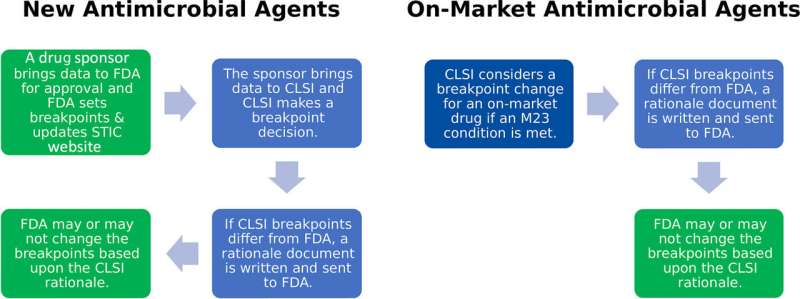
The unique regulatory environment for the clearance and use of antimicrobial susceptibility test (AST) systems is complex in the U.S. While members of the medical microbiology community recognize the importance of updating breakpoints for clinical and public health, there is a knowledge gap regarding the regulatory requirements for breakpoint updates and how these requirements impact the medical laboratory's update processes.
What do medical laboratory professionals need to know about the Food and Drug Administration's (FDA) breakpoint clearance process and how it impacts their testing?
Device and breakpoint clearance at the FDA
Two branches of the FDA are involved in clearing breakpoints for AST devices. The FDA Center for Drug Evaluation and Research (CDER) regulates antimicrobials and their associated breakpoints. In contrast, the FDA Center for Devices and Radiological Health regulates AST devices, including breakpoint implementation based on CDER-recommended breakpoints at the time of device clearance.
Medical devices are classified into 3 categories , and the regulatory requirements increase as the classification moves from class 1–3. These categories are primarily based on the device's intended use, indications for use and risk to the patient or user .
Antimicrobial susceptibility test devices are considered class 2 devices. For a new class 2 device to receive clearance or for a modification of the existing device to be cleared, a document called a 510(k) must be submitted to the FDA for review. According to the FDA, "a 510(k) is a premarket submission made to FDA to demonstrate that the device to be marketed is as safe and effective, that is, substantially equivalent, to a legally marketed device."
In the case of breakpoints, the device manufacturer might have to submit data in the form of a 510(k) demonstrating acceptable drug performance on the device when using new breakpoints. To streamline and expedite the breakpoint update pathway, in 2019, the FDA created a process where manufacturers could submit a breakpoint change protocol with their 510(k) submission for clearance.
The purpose of this protocol was to allow manufacturers to proactively describe the actions they would take to update breakpoint information in the product label and, if conditions were appropriate, would prevent them from submitting another regulatory application to the FDA at the time of a breakpoint update. Although this was a helpful modification, limitations on how the protocol could be used still existed.
In Sept. 2023, the FDA issued a new, more comprehensive guidance document for AST manufacturers that supersedes the guidance document published by the agency in 2009 and provides an option for further expediting breakpoint updates, called a predetermined change control plan (PCCP), formerly the breakpoint control plan.
The PCCP may be pursued by manufacturers submitting an original 510(k) clearance document for their device (e.g., a new device coming to market) and those updating breakpoints on a previously cleared (legacy) device.
Once the PCCP is cleared with a 510(k) submission, in the event of future breakpoint updates, and if certain criteria are met, the label can be updated without an additional 510(k) submission to the FDA. The primary advantage of this program is that manufactures of new and legacy AST devices can re-process existing data to demonstrate acceptable performance with the new breakpoint, send that update to the FDA and update their label for use on the system. This revised process saves a significant amount of time because a review of data by the FDA is not required.
It is important to note that the breakpoint update should not significantly change the performance of the previously cleared device, and for a PCCP to be applicable, the device classification regulation, product code, intended use and technological classifications should be the same as those originally cleared.
Additionally, breakpoint updates are typically followed by customer letters, other forms of communication from the manufacturer that must be constructed and software updates. Given these considerations, medical laboratory professionals can expect a lag between the publication of new breakpoints and the full implementation of the breakpoints on their automated system, even if the clearance process is expedited.
Finally, manufacturers may only use the PCCP process for breakpoints published on the FDA STIC website, so this process only applies to CLSI breakpoints that the FDA has recognized.
New breakpoints, fewer organism indications
Before 2007, both FDA and Clinical and Laboratory Standards Institute (CLSI) breakpoints could be reported from an FDA-cleared AST device. In 2007, the FDA published a class II special guidance document specifically for AST systems, which required that AST devices in the U.S. only report FDA-recognized breakpoints, and the use of CLSI breakpoints was allowed only for instruments with clearances in 2007 or earlier.
After a revision in 2009, the document stated that results from AST devices should be reported only for microbial species that had in vivo efficacy data listed in the antimicrobial's instructions-for-use. Today, this poses a dilemma for AST device manufacturers seeking clearance for new breakpoints on their systems, and for medical laboratories hoping to update them. "Grandfathering" of old breakpoints or broad organism claims is no longer allowed.
This means device manufacturers may only receive clearance for breakpoints recognized by the FDA and for organisms claimed in the original antimicrobial label. Additionally, the list of organisms with in-vivo data in the drug label (known as "list 1") is typically limited and often does not contain all clinically relevant organisms that may be treated in the clinical setting.
These regulations significantly impact medical laboratories for several reasons. For example, many clearances were obtained before 2007 for large organism categories like "clinically significant gram-negative bacilli." Because of this, performing susceptibility testing (using the cleared device) on all clinically significant gram-negative bacilli was considered on-label.
Under the new FDA regulations, many organism claims may be removed when clearance for new breakpoints is pursued, making the reporting of any organism not listed in the test package insert off-label.
Let's walk through an example using the antibiotic cefazolin . The breakpoints for cefazolin were lowered by CLSI in 2010, and FDA-CDER agrees with these breakpoints for systemic infections (not uncomplicated urinary tract infections).
Since the FDA recognizes the CLSI breakpoints, AST device manufacturers can submit data demonstrating the performance of, and seek clearance for, those breakpoints on their device. However, since the organism claims must now reflect what is in the cefazolin antibiotic package insert, the broad category of "clinically significant gram-negative bacilli" no longer applies.
In the case of cefazolin, the only gram-negative organisms listed in the label for systemic infection(s) are Escherichia coli and Proteus mirabilis. Manufacturers are allowed to submit data that supports the testing of non "list 1" organisms, as long these organisms do not comprise more than 5% of the dataset and are biologically similar to the "list 1" organisms (e.g., are all Enterobacterales).
Whether or not a package insert will contain only the species listed in the drug label or a larger group like Enterobacterales will depend on the data submitted by the manufacturer. Regardless, this regulation may limit the species indicated in the label since including large groups with off-label organisms (e.g., clinically significant gram-negative bacilli) is no longer allowed.
If a medical laboratory wants to use the new breakpoints on their device for other gram-negative organisms, this is considered off-label, and the laboratory has to perform a validation. If the manufacturer has performed an internal validation for additional organism-drug combinations, these data may be applicable in countries that follow ISO 20776-2 guidance for determining the performance of AST systems.
This is because ISO performance standards assess essential agreement and bias and are independent of breakpoints, which allows new breakpoints to be implemented immediately. However, this differs in the U.S., where device manufacturers must strictly adhere to FDA regulations.
What this means for medical laboratories
Updating breakpoints is essential for appropriate patient care and public health and should be prioritized by medical microbiology laboratories. While this process may be a significant undertaking, multiple resources are available to assist laboratories and help them maintain updated AST breakpoints in all their testing methodologies.
In a recent publication summarizing the ASM 2022 Clin Micro Open conference, published in the Journal of Clinical Microbiology , the authors note a significant lack of understanding regarding barriers and needs between industry, regulatory, clinical and public health microbiology groups. The publication calls for greater group dialogue and collaboration between sectors to address breakpoint updating and implementation barriers.
Medical laboratory professionals may find themselves performing numerous off-label validations to use updated breakpoints on their device or to validate organisms now considered off-label after a recent breakpoint clearance.
Users of AST devices must contact the manufacturer with any questions about clearance or breakpoint updates to understand what may require validation and plan accordingly. Additionally, it is imperative to collaborate with clinical colleagues to prioritize breakpoint and organism validations based on need, resources and local epidemiology.
Journal information: Journal of Clinical Microbiology
Provided by American Society for Microbiology
Explore further
Feedback to editors

Study: Focusing immediately on the benefits of waiting might help people improve their self-control
3 hours ago

Utilizing palladium for addressing contact issues of buried oxide thin film transistors

Ocean waves propel PFAS back to land, new study finds

eDNA methods give a real-time look at coral reef health

Prehistoric henge reveals centuries-old sacred site in Lincolnshire

Kerr-enhanced optical spring for next-generation gravitational wave detectors

New micromaterial releases nanoparticles that selectively destroy cancer cells
4 hours ago

Simulating magnetization in a Heisenberg quantum spin chain

Chemical reactions can scramble quantum information as well as black holes

Researchers say neutron stars are key to understanding elusive dark matter
5 hours ago
Relevant PhysicsForums posts
What do large moles on the body indicate.
Mar 30, 2024
Avian flu - A new study led by a team from the University of Maryland
Mar 27, 2024
Are all biological catabolic reactions exergonic?
Mar 20, 2024
A First of Its Kind: A Calcium-based signal in the Human Brain
Mar 18, 2024
Biological culture and cultural biology
Mar 17, 2024
Potentially fatal dog parasite found in the Colorado River
Mar 15, 2024
More from Biology and Medical
Related Stories

Machine learning identifies common DNA structures
Jul 9, 2019

Oncogenic driver FGFR3-TACC3 requires 5 coiled-coil heptads for activation and disulfide bonds for stability
Feb 23, 2023

Will this antibiotic work for you? A quick and easy method of testing antimicrobial susceptibility
Nov 21, 2023

Certain 510(k) medical device characteristics are associated with recalls
Jan 10, 2023

Research identifies fresh 'mixers' in river pollution 'cocktail'
Jan 25, 2022

Revamped guidance 'cleans up' medical device instructions for use
Feb 11, 2021
Recommended for you

Microorganisms may be essential to the survival of coral reefs threatened by climate change
6 hours ago

Discovery of how COVID-19 virus replicates opens door to new antiviral therapies
7 hours ago

Scientists observe neuronal stimulus transmission by coloring nerve cells with novel antibody
8 hours ago

New research shows key molecules within nerve cells persist throughout life
Apr 4, 2024

How plants heal wounds: Mechanical forces guide direction of cell division
Let us know if there is a problem with our content.
Use this form if you have come across a typo, inaccuracy or would like to send an edit request for the content on this page. For general inquiries, please use our contact form . For general feedback, use the public comments section below (please adhere to guidelines ).
Please select the most appropriate category to facilitate processing of your request
Thank you for taking time to provide your feedback to the editors.
Your feedback is important to us. However, we do not guarantee individual replies due to the high volume of messages.
E-mail the story
Your email address is used only to let the recipient know who sent the email. Neither your address nor the recipient's address will be used for any other purpose. The information you enter will appear in your e-mail message and is not retained by Phys.org in any form.
Newsletter sign up
Get weekly and/or daily updates delivered to your inbox. You can unsubscribe at any time and we'll never share your details to third parties.
More information Privacy policy
Donate and enjoy an ad-free experience
We keep our content available to everyone. Consider supporting Science X's mission by getting a premium account.
E-mail newsletter

IMAGES
VIDEO
COMMENTS
Here's a non-exhaustive list of medical microbiology project topics for undergraduates and MSc students. Topic 1: Investigating the Role of Gut Microbiota in Autoimmune Diseases. Autoimmune diseases have been linked to alterations in the gut microbiota. This project aims to explore the relationship between gut microbiota composition and the ...
Medical Microbiology Research Topics. Maybe you want to explore microbiology and human health topics. In that case, consider these medical-related microbiology paper topics. ... This category also has some of the best microbiology topics for presentation. However, get ready to research any of these topics to write an impressive paper.
Six Key Topics in Microbiology: 2024. in Virtual Special Issues. This collection from the FEMS journals presents the latest high-quality research in six key topic areas of microbiology that have an impact across the world. All of the FEMS journals aim to serve the microbiology community with timely and authoritative research and reviews, and by ...
Molecular Pathogenesis of Enteroviruses: Insights into Viral-Host Interactions, Pathogenic Mechanisms, and Microbiome Dynamics. Man Lung Yeung. Jade LL Teng. Shubhada Bopegamage. 248 views. 1 article. The most cited microbiology journal which advances our understanding of the role microbes play in addressing global challenges such as healthcare ...
Six Key Topics in Microbiology: 2020. Read an essential collection of papers showcasing high-quality content from across the five FEMS Journals, which together provide an overview of current research trends in microbiology. Follow the topic area links below for access to articles: Antimicrobial Resistance. Environmental Microbiology.
Medical Microbiology begins with a review of the immune system, focusing on the body's response to invading microorganisms. Bacteria are then covered, first with a series of chapters presenting the general concepts of bacterial microbiology and then with chapters detailing the major bacterial pathogenes of humans. Similar sections cover virology, mycology, and parasitology. In each section ...
Top 100 in Microbiology - 2022 This collection highlights our most downloaded* microbiology papers published in 2022. Featuring authors from around the world, these papers showcase valuable ...
Keywords: microbiology, case presentations, critical thinking, basic science. Medical students can be overwhelmed and frustrated by the traditional means of teaching medical microbiology (MM) . Students are required to learn the 'bug parade' with an emphasis on the microorganisms and the factors they produce that leads to human pathology ...
Just like a human being, a house or office has its own microbiome, with good and bad microorganisms. One researcher has a targeted idea: to customize our spaces with the right microbes. Posted Jan 2017. See all articles on Microbiology. Loading... A collection of TED Talks (and more) on the topic of Microbiology.
100+ Microbiology Project Topics [Updated] Microbiology, the study of microorganisms, holds immense importance in the realms of medicine, agriculture, industry, and environmental science. It's a field teeming with opportunities for exploration and discovery. For students passionate about unraveling the mysteries of the microbial world ...
Premium Google Slides theme and PowerPoint template. Advances in medicine are always important events, and it's great if the new findings can be presented in a clear manner. If you want to make a contribution to the medical community and share what you found out in your research, this new breakthrough presentation template is for you.
Each case study details a patient's history and presentation, the action (s) of the doctor, lab test results, diagnosis and treatment, as well as the final patient outcome. The case studies are in PowerPoint (.ppt) format and contain, on average, 12 slides. Each case study was developed by a different author.
Six Key Topics in Microbiology: 2018. The FEMS journals present selected papers on "Six Key Topics" in Microbiology. This essential collection showcases high-quality content from across the five FEMS journals, which together provide an overview of current research trends in microbiology. Click on the topic area below for access to articles.
The events are designed as a regularly repeated series of short (typically 1-2 hour) online meetings. The Journal of Medical Microbiology (JMM) monthly seminar series is designed to showcase high-quality and timely research from the journal's key authors. JMM welcomes everything from laboratory research to clinical trials, including ...
Reviews and Research in Medical Microbiology is a quarterly review journal which provides a balanced coverage of the whole field of medical microbiology. The Journal publishes state-of-the art reviews, mini-reviews, case presentations and original research from on-going research of the latest developments and techniques in medical microbiology, virology, mycology, parasitology, clinical ...
Microbiology is one of the very actively researched grounds, that deal with the study of microorganisms starting from the eukaryotic fungi to single celled and various cell cluster organisms. Various courses like B.Sc., M. Sc., M. Phil and Ph.D in subjects like Microbiology, Biotechnology and Molecular Biology, students are doing projects for ...
Microbiology is the study of microscopic organisms, such as bacteria, viruses, archaea, fungi and protozoa. This discipline includes fundamental research on the biochemistry, physiology, cell ...
Six Key Topics in Microbiology: 2019. Read an essential collection of papers showcasing high-quality content from across the five FEMS Journals, which together provide an overview of current research trends in microbiology. Follow the topic area links below for access to articles: Antimicrobial Resistance. Environmental Microbiology.
Viral, bacterial, fungal and protozoal biology is of cardinal importance for the evolutionary history of life, ecology, biotechnology and infectious diseases. Various microbiological model systems have fundamentally contributed to the understanding of molecular and cellular processes, including the cell cycle, cell death, mitochondrial ...
Arthur Talaro. Welcome to the Online Learning Center for Foundations in Microbiology, fourth edition. This media supplement provides resources for student study, instructor lecture presentation, and supplemental research projects. Moreover, this entire McGraw-Hill resource is easily loaded into course management systems such as WebCT or Blackboard.
Journal of Medical Microbiology is the go-to interdisciplinary journal for medical, dental and veterinary microbiology, at the bench and in the clinic. It provides comprehensive coverage of medical, dental and veterinary microbiology and infectious diseases, welcoming articles ranging from laboratory research to clinical trials, including bacteriology, virology, mycology and parasitology ...
The Physician Unionization Trend 2023. Physician Compensation 2023. AI in Oncology. Controversies in Rheumatology. Violence Against HCPs. Innovative Oncology. Post-Residency Preparedness. Physician Shortage. Mental Health.
Publications on DEI Topics by Our Faculty. Our Team. Faculty. Faculty by Specialty. Postdoctoral & Postgraduate Trainees & Fellows. ... Chinese Academy of Medical Sciences/Peking Union Medical College (CAMS/PUMC) Shanghai Jiao Tong University (SJTU) ... Microbiology Pre-Doctoral and Post-Doctoral Research in Progress Seminar Series 2023-2024.
The unique regulatory environment for the clearance and use of antimicrobial susceptibility test (AST) systems is complex in the U.S. While members of the medical microbiology community recognize ...